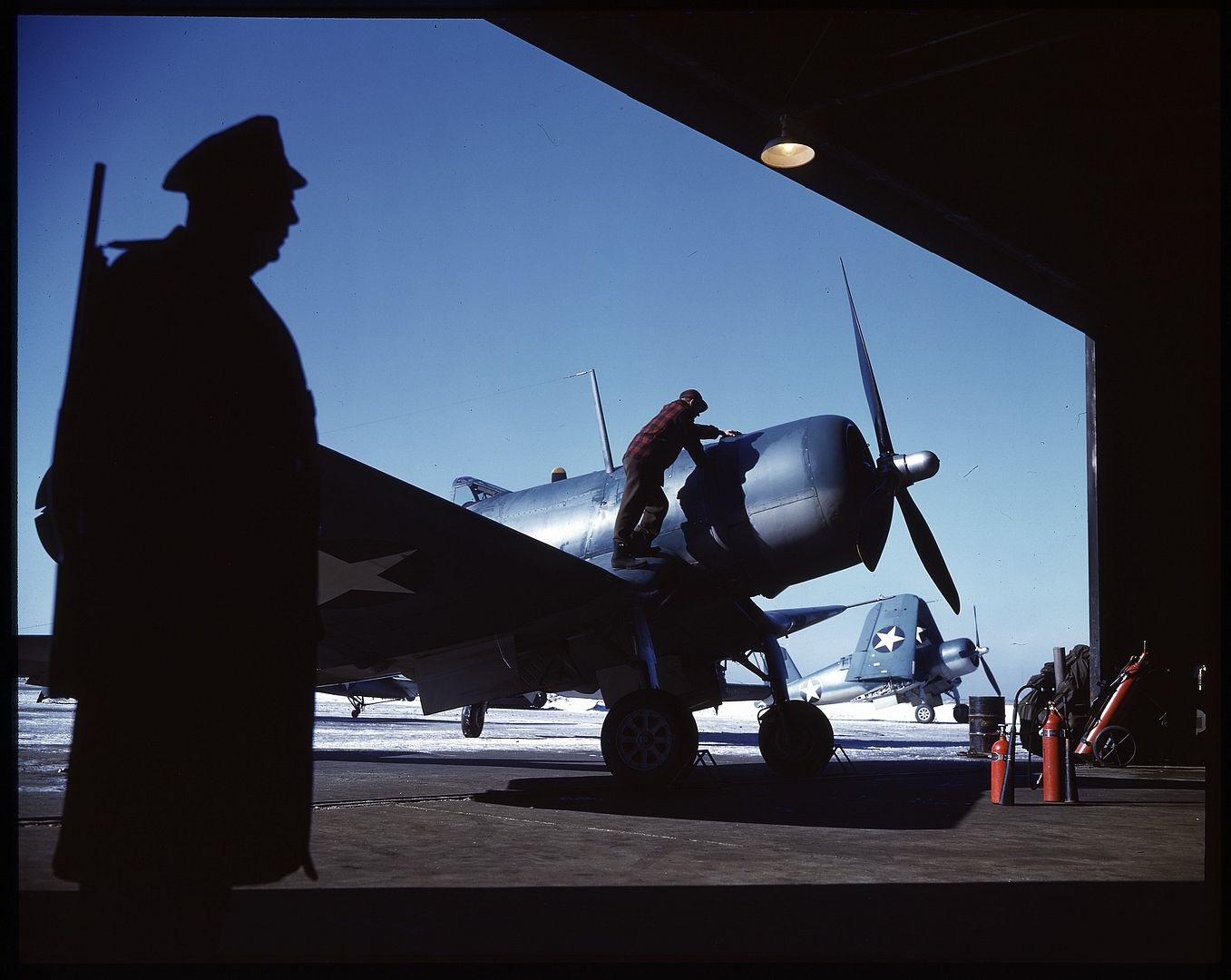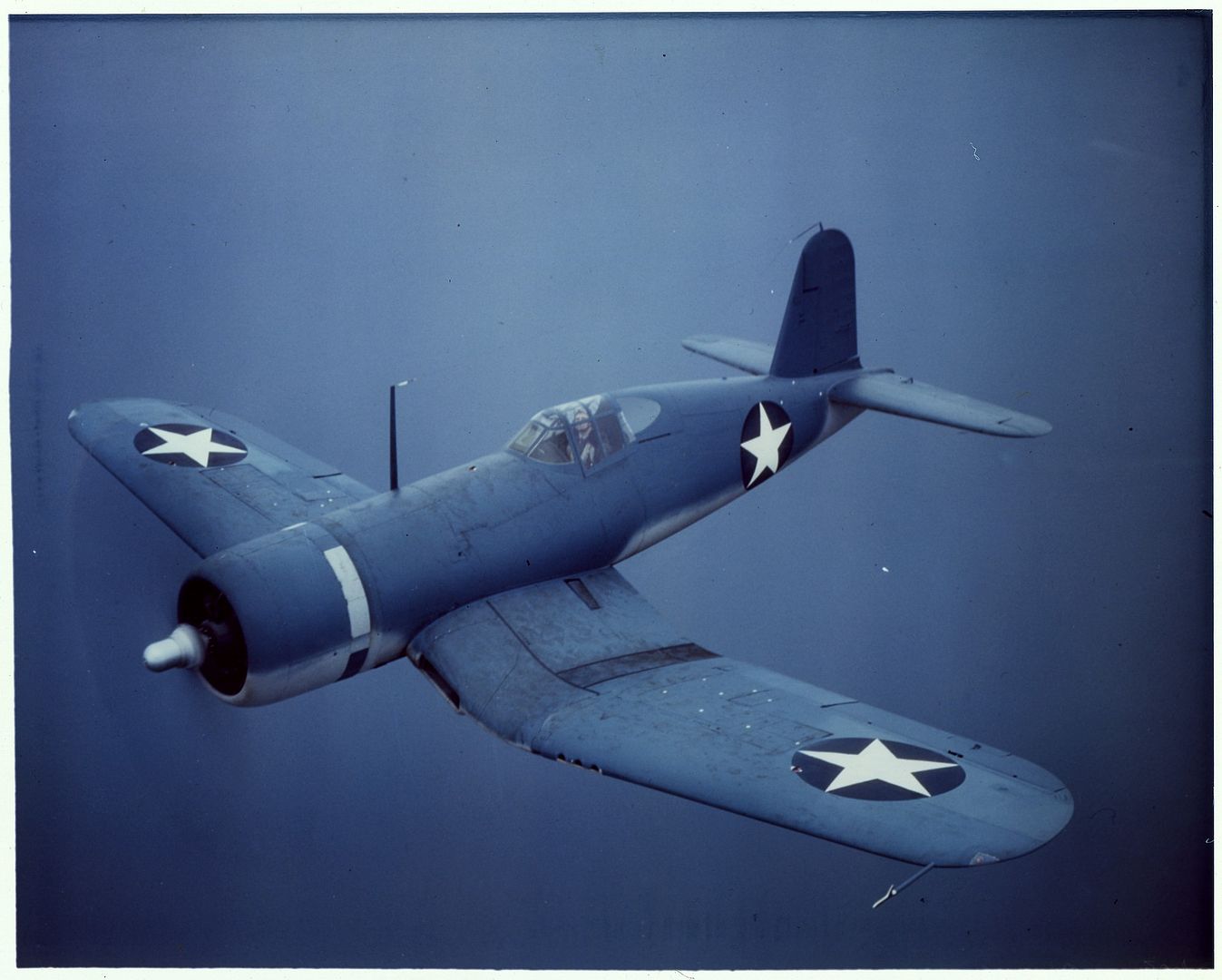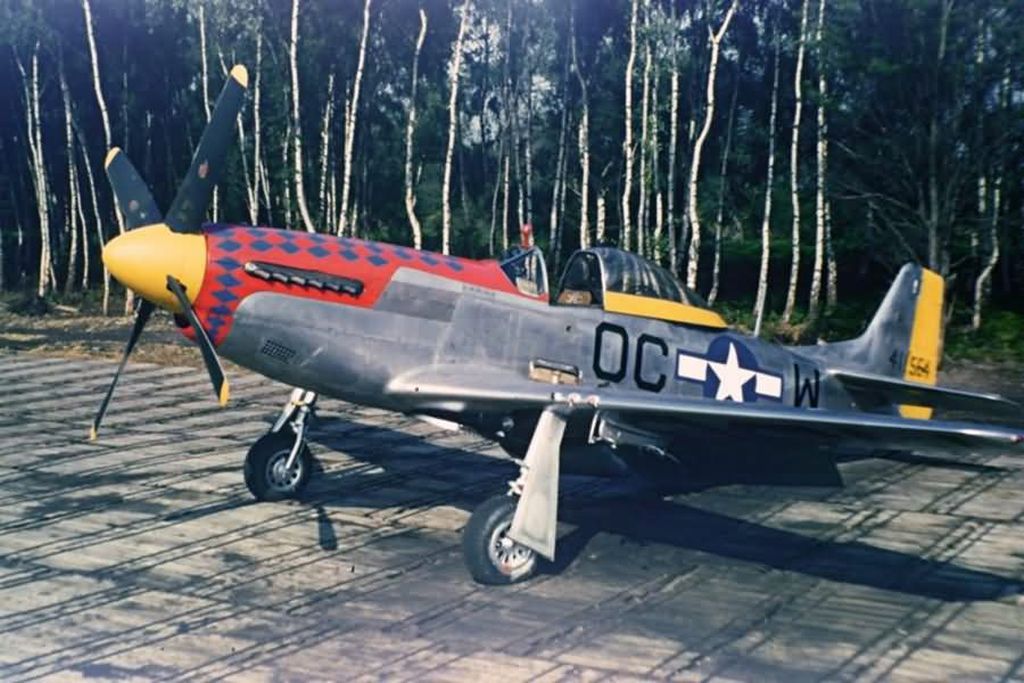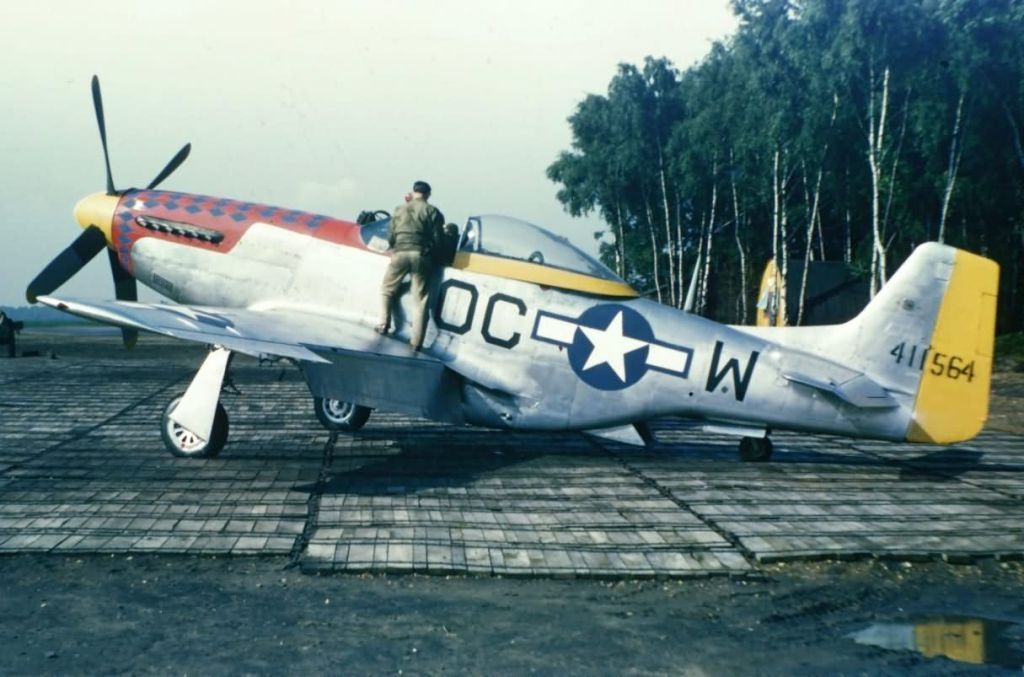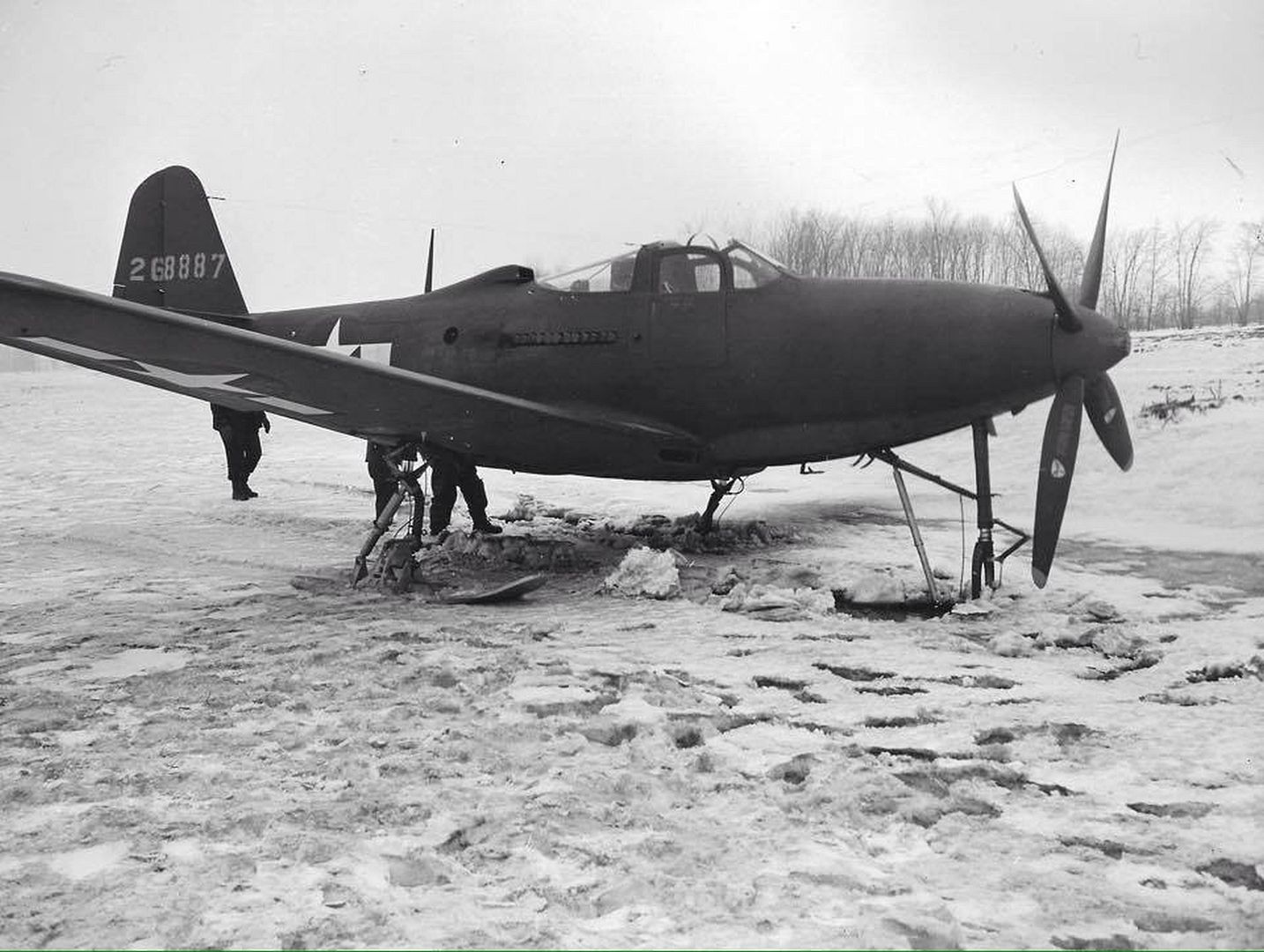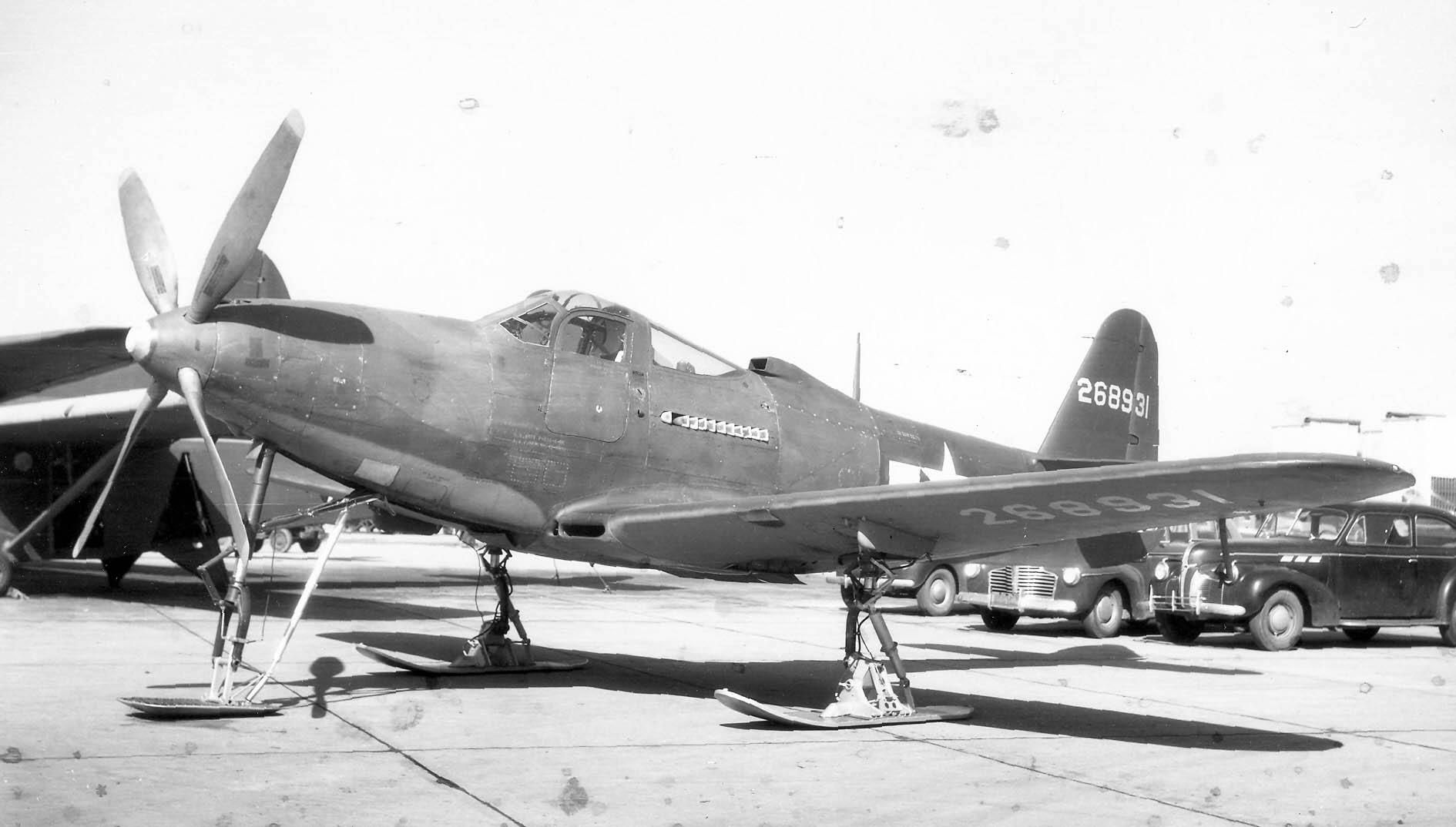Forums
- Forums
- Axis And Allies Forum
- General Discussion
- Photo of the week
Photo of the week
Post a reply
- Go to Previous topic
- Go to Next topic
- Go to Welcome
- Go to Introduce Yourself
- Go to General Discussion
- Go to Screenshots, Images and Videos
- Go to Off topic
- Go to Works in Progress
- Go to Skinning Tips / Tutorials
- Go to Skin Requests
- Go to IJAAF Library
- Go to Luftwaffe Library
- Go to RAF Library
- Go to USAAF / USN Library
- Go to Misc Library
- Go to The Ops Room
- Go to Made in Germany
- Go to Campaigns and Missions
- Go to Works in Progress
- Go to Juri's Air-Raid Shelter
- Go to Campaigns and Missions
- Go to Works in Progress
- Go to Skinpacks
- Go to External Projects Discussion
- Go to Books & Resources
-
 Main AdminThree this week.
Main AdminThree this week.
From the Grumman family.
TBF Avenger on the ground with engine running; crewmen are getting into the aircraft; Floyd Bennett Field, Long Island, New York.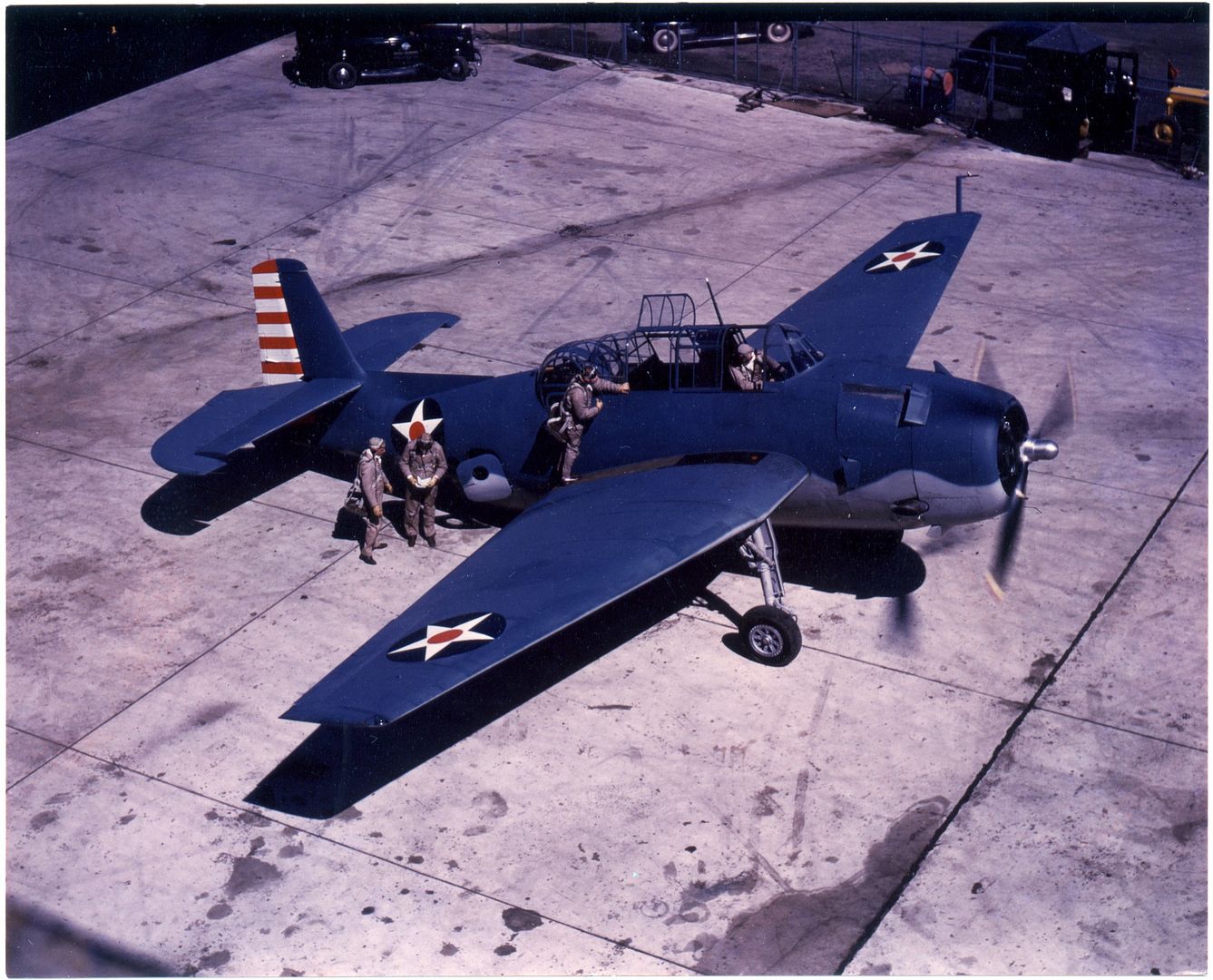
Grumman JRF Goose aircraft on the ground at the Grumman Aircraft facility on Long Island, NY,1943. Scooters are used for transporting pilots and for fire extinguishing.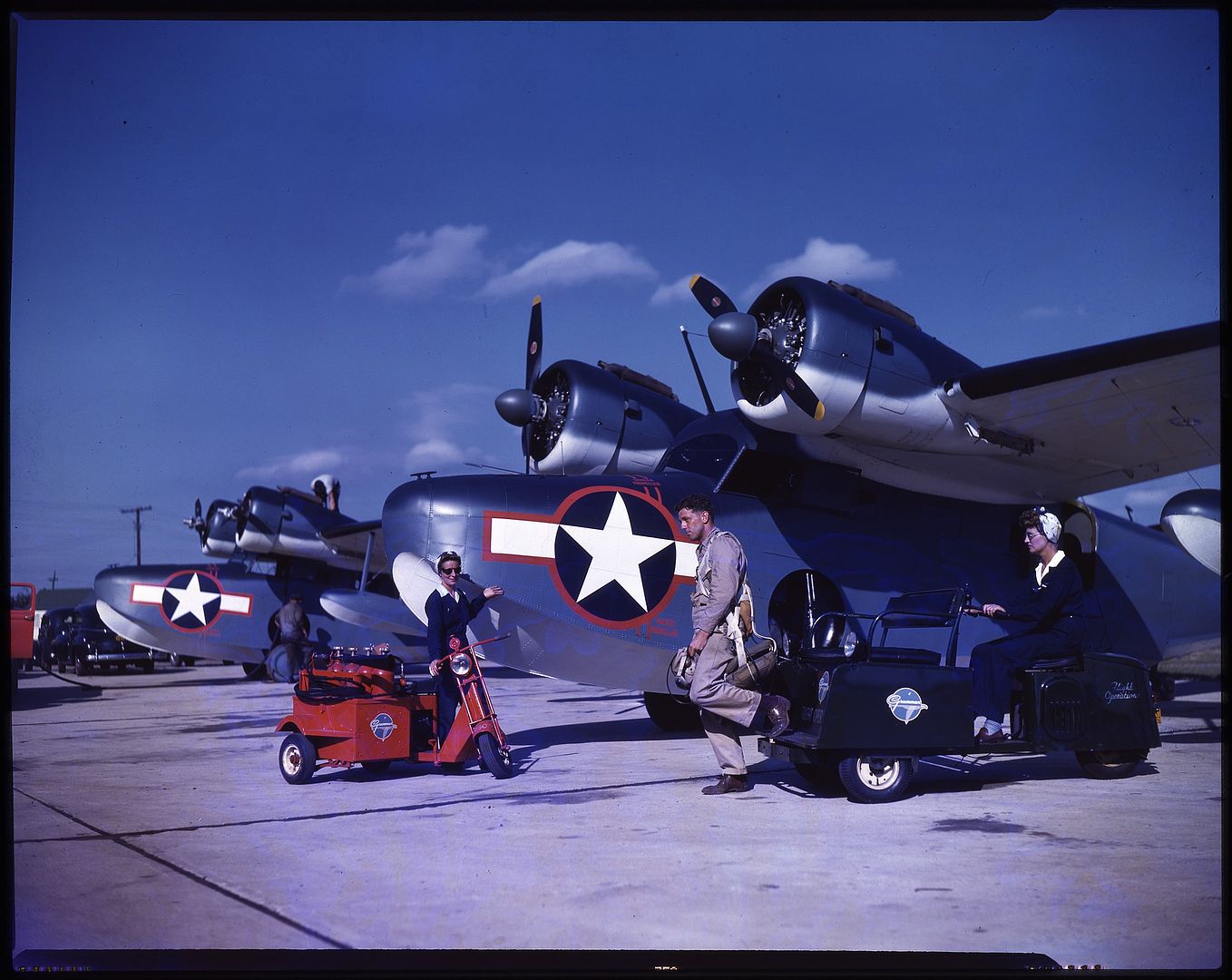
And Grumman TBF-1 Avenger (BuNo unknown) in flight, circa mid-1942.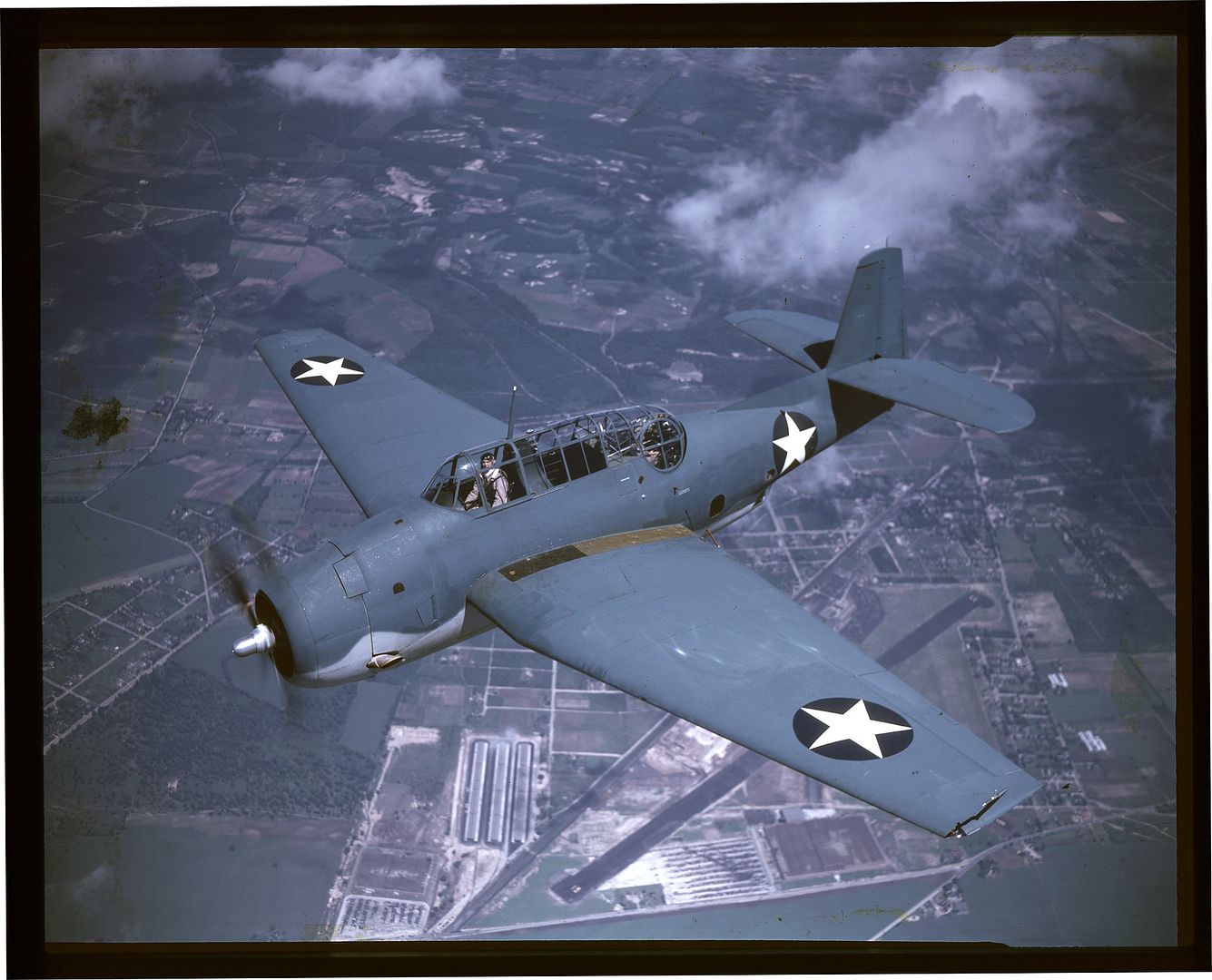
-
 Main Admin
Main Admin -
9 years agoWed Mar 23 2016, 04:45pm
 Main AdminMid week photo's.
Main AdminMid week photo's.
David Schilling was born in Leavenworth, Kansas, on December 15, 1918. His family moved to Kansas City, Missouri, where he went to high school. He graduated from Dartmouth College with a B. S. degree in geology in June 1939.
Schilling joined the United States Army in September 1939 as an aviation cadet and received his commission in the Air Corps upon completion of flight training in May 1940. The following summer he became one of the original members of the 56th Fighter Group.
P-47 Thunderbolt ("War Weary") of the 56th Fighter Group, flown by Lieutenant-Colonel David Schilling, at Thurleigh.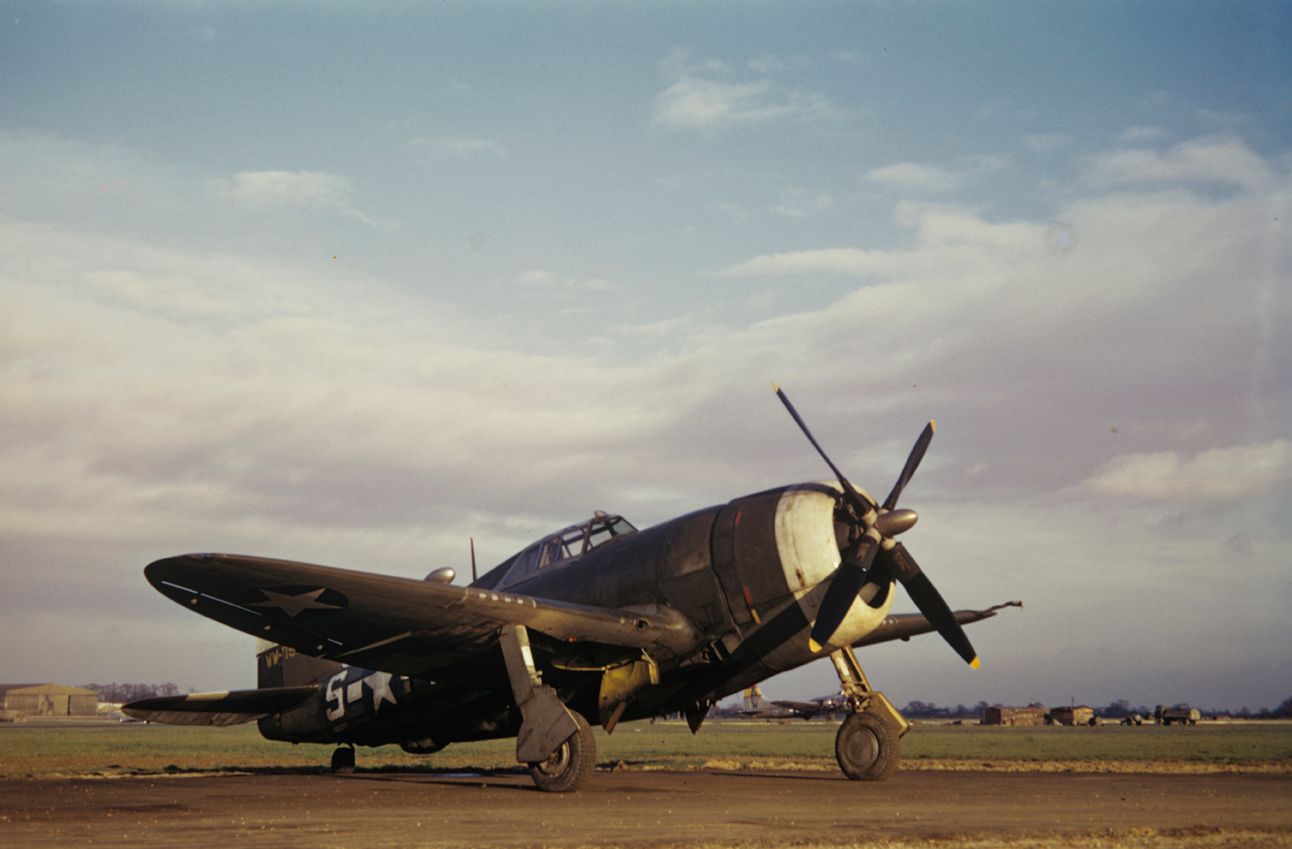
He was Commanding Officer of the 56th Fighter Group between August 1944 and January 1945, taking over from Colonel Hubert A Zemke.
By the end of WWII Col. David Schilling was the third-ranking ace of the 56th FG ?Zemke?s Wolf Pack? having flown 132 combat missions with 22.5 air victories and 10.5 ground victories.
December 23rd he became an " Ace in a day"
"Schilling lead his men over the battleground, where he lost track of two consecutive enemy formations in the clouds. He angrily took his ground controllers to task, but they replied, ?Don?t worry about it! There?s bigger game on this heading!?
There was. A large enemy formation was located below, and 40-plus more were flying ahead, including new Focke-Wulf Fw-190D ?long-nosed? high-altitude fighters. Sending the 61st and 63rd down to attack the Germans below, Schilling brought the 62nd around behind the group ahead. ?I managed to hit the right rear Me-109 with about a 20-degree deflection shot at a range of about 700 yards,? he reported, and as the Messerschmitt dropped off he moved up on the next in line, setting it afire. ?I then picked another and fired at about 1,000 yards and missed as he broke right and started to dive for the deck. At about 17,000 feet I had closed to about 500 yards and fired, resulting in a heavy concentration of strikes, and the pilot bailed out.?
Now separated from his flight, Schilling spotted 35 to 40 Focke-Wulfs circling 1,000 feet below him. ?I repeated the same tactics as before and attacked one from about 500 yards range.? As the Fw-190 went spinning downward, Schilling latched onto a fifth, which put up more of a fight: ?He immediately took violent evasive action, and it took me several minutes of maneuvering to get in a position to fire. I fired from about 300 yards above and to the left, forcing me to pull through him and fire as he went out of sight over the cowling?.The pilot immediately bailed out.?
Hooking up with a stray 63rd Squadron pilot, Schilling looked for a sixth kill, but when his wingman was attacked he broke off to help him out. Both escaped. When all the gun-camera film was sorted out later, the Wolfpack had chalked up its best day ever?34 enemy aircraft destroyed. Their tally now stood at more than 800?25% of the Eighth Air Force total. Schilling, who was awarded the Distinguished Service Cross, soon moved up to join 65th Wing Headquarters, finishing the war as a full colonel "
Below Col Schilling & his Republic P-47D-25-RE 42-26641 Thunderbolt "Hairless Joe".
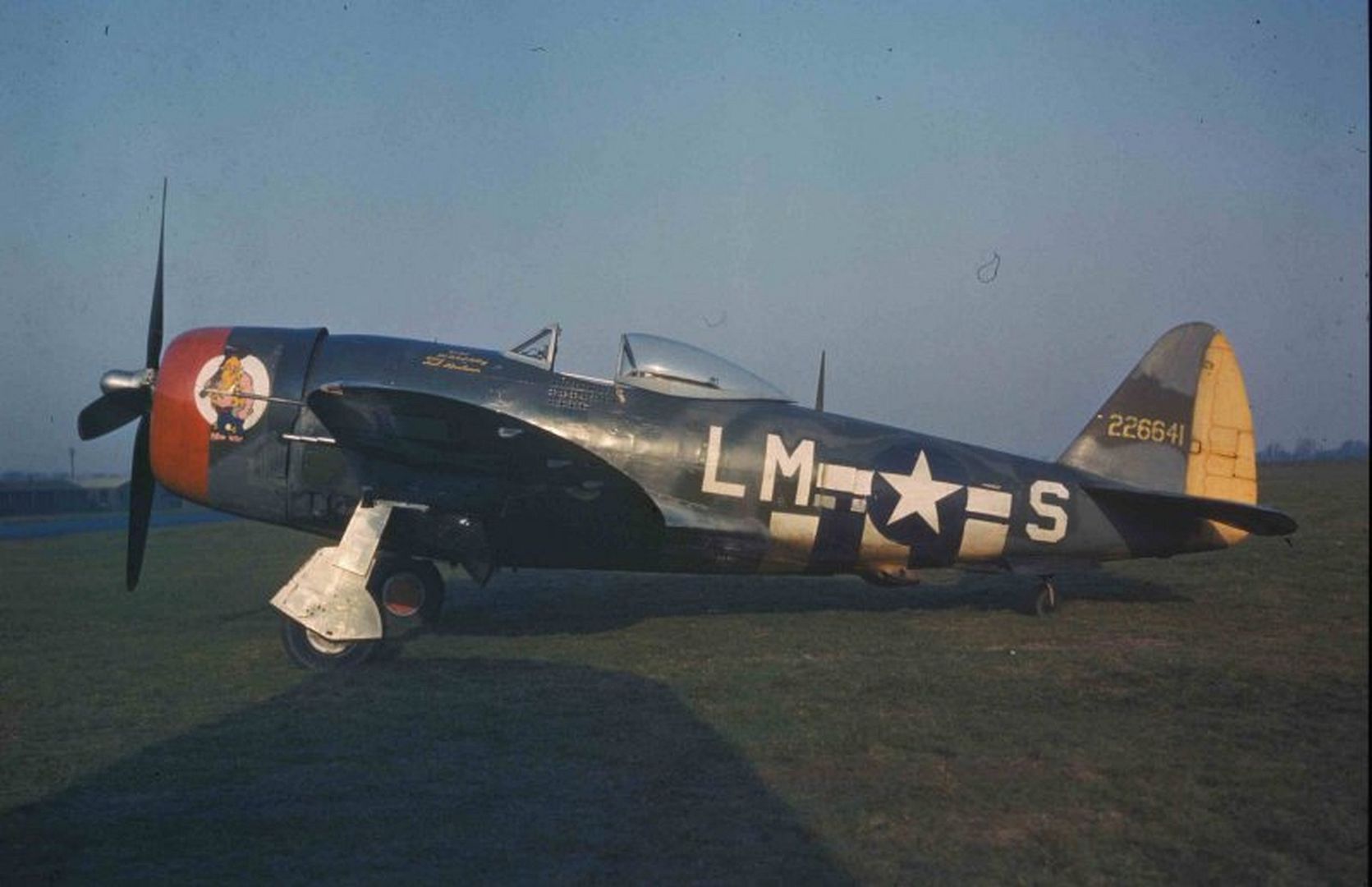
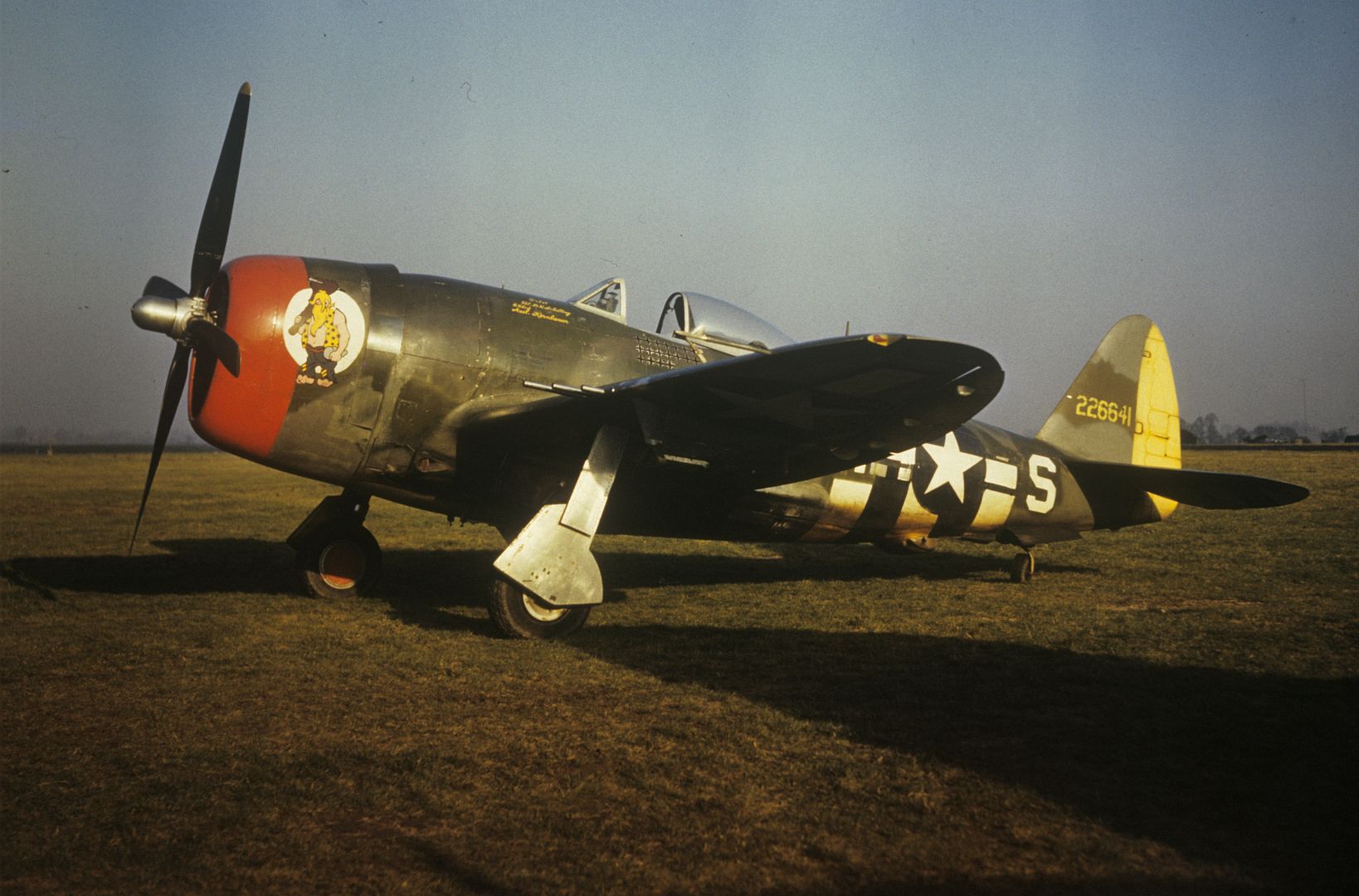

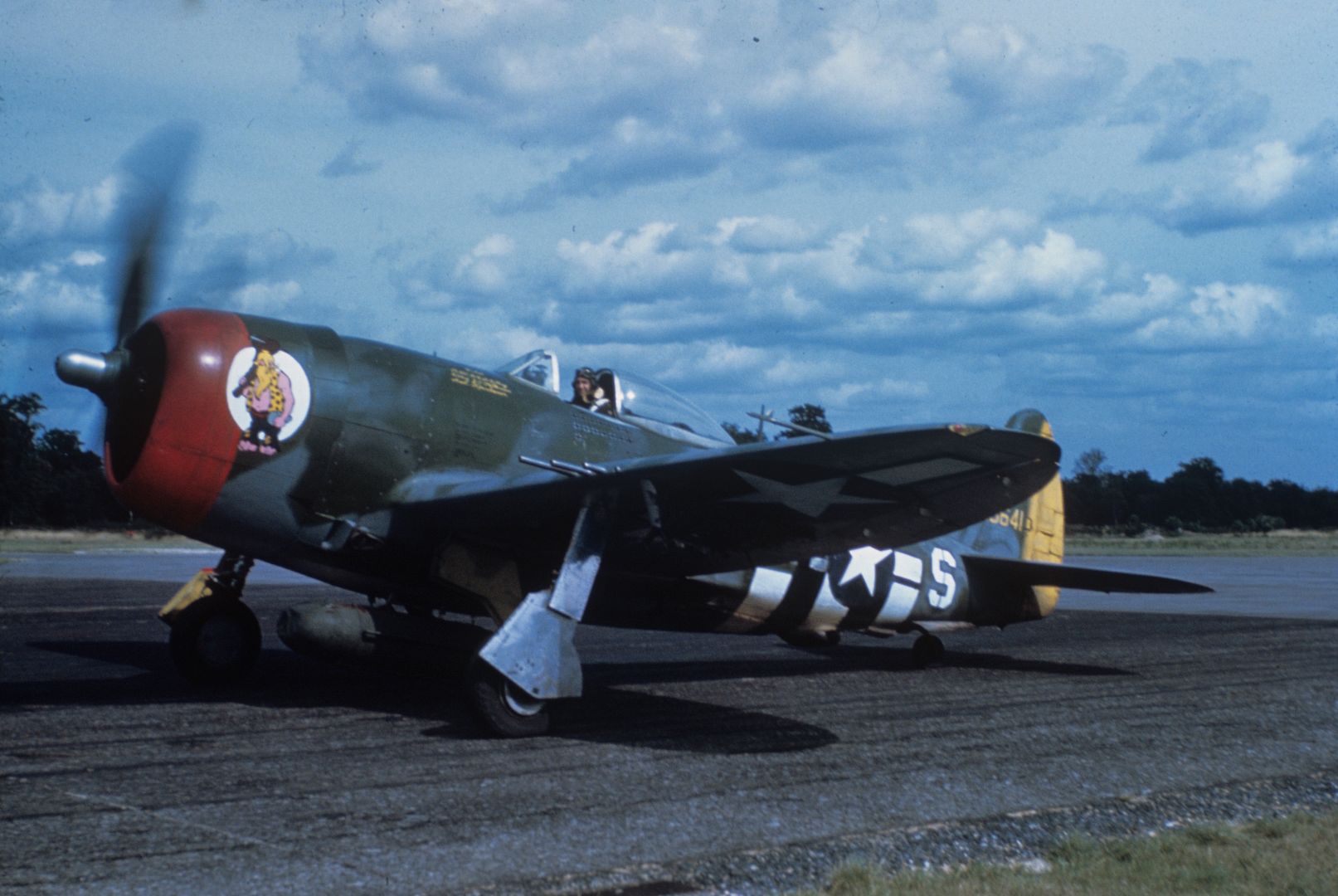

After the war, he again commanded the 56th Fighter Group and pioneered long-distance jet operations in the P-80 Shooting Star. In early 1948 Schilling conceived an operation called Fox Able (phonetic for "Fighter Atlantic") in which jet aircraft, then ferried to Europe by ship, could be flown across the Atlantic via Iceland and Scotland in 900-mile legs and sold it to Air Force Chief of Staff, General Carl A. Spaatz. In the summer of 1948 he made Fox Able a reality and took the 56th FG to Germany in a show-of-force response to the Berlin blockade. Just prior to this, de Havilland Vampires of No. LIV Squadron RAF had made the first jet crossing, flying from the UK to North America.
In 1950, he flew from RAF Manston in the United Kingdom to Maine in the United States, in the first nonstop trans-Atlantic flight by a jet fighter. Using probe-and-drogue flight refuelling, Schilling, flying an F-84E Thunderjet and another F-84E flown by Col. William Ritchie, were refuelled by first a Flight Refuelling Ltd (FRL) Lancaster tanker near Prestwick, Scotland, followed by a refuelling from another FRL tanker, this time a Lincoln near Iceland. In a third and final tanker rendezvous, Ritchie's nose probe, which had been damaged in the refuelling with the Lincoln, was unable to transfer fuel from the final tanker, a USAF KB-29 offshore from Labrador, forcing him to eject over Labrador when he ran out of fuel. Ritchie was safely picked up shortly afterwards. Schilling's refuelling went as-intended and he landed at an airbase at Limestone, Maine, after a flight of ten hours and eight minutes. For this flight, Schilling received the Harmon Trophy. In 1952, he took command of the 31st Fighter Escort Wing at Turner Air Force Base, Georgia, flying F-84 Thunderjets, and led a non-stop flight across the Pacific Ocean to Japan in Fox Peter One.
On August 14, 1956, while serving as Inspector General in the Strategic Air Command's Seventh Air Division, Schilling died in a car accident on a narrow, two-lane country road in England between RAF Lakenheath and RAF Mildenhall ? Royal Air Force stations used by the U.S. Air Force. Colonel Schilling was driving a Cadillac/Allard sports-racing car; he, General Curtis LeMay, and other race enthusiasts had each purchased a model to form a stable for Sports Car Club of America events. On the day of the accident, he was driving to Mildenhall to meet at the Officer's Club with an Army lieutenant who had expressed interest in buying the car. At fairly high speed, he approached another car from behind, intending to pass. The cap he was wearing started to blow off and as he reached up to grab it, the car skidded sideways and struck the stone side-railing of a bridge at Eriswell in Suffolk, cutting the car in half at the driver's seat and causing the front of the car to topple into the stream below. Schilling died instantly. The day before his death, he had flown his last flight in a B-47. At the time of his death he was on Temporary Duty (TDY) from the HQ of 7th Air Division at South Ruislip to RAF Lakenheath.
On March 15, 1957, Smoky Hill Air Force Base in Salina, Kansas was renamed Schilling Air Force Base in his honor. The Air Force Association's Award for Outstanding Flight, which Schilling won in 1952, was named for him after his death. -
9 years agoFri Mar 25 2016, 04:54pm
 Main AdminThis weeks photos.
Main AdminThis weeks photos.
Curtiss C-46A-60-CK 347271 (43-47271) c/n 342/CK319. Soviet Air Force.
The Soviet Union requested the supply of 120 C-46s under the 4th Lend-Lease Protocol, but this request was rejected. Eventually, this single aircraft was delivered for evaluation in the summer of 1945.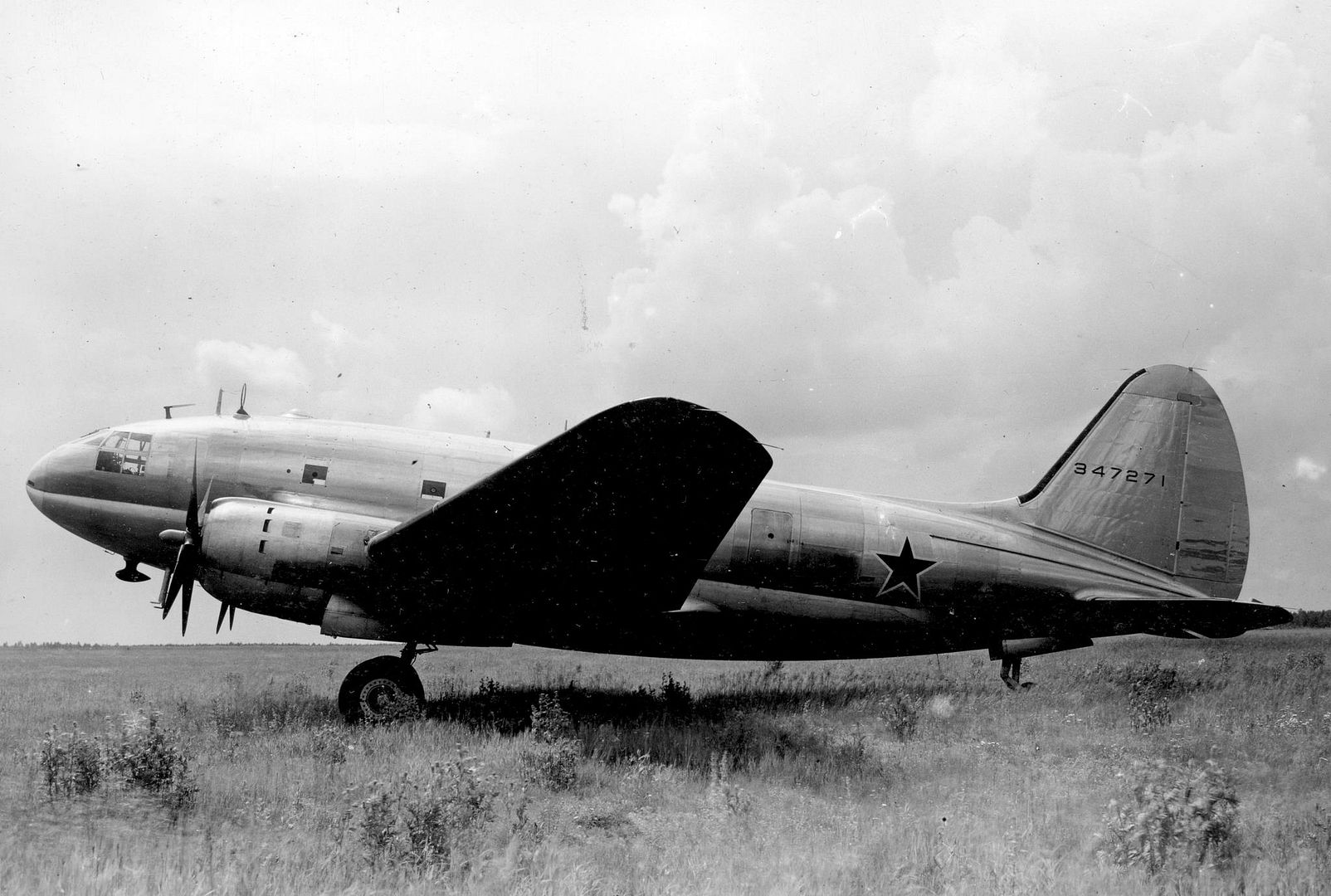
P-63's.Ready for the ferry flight to Russia, at Niagara.
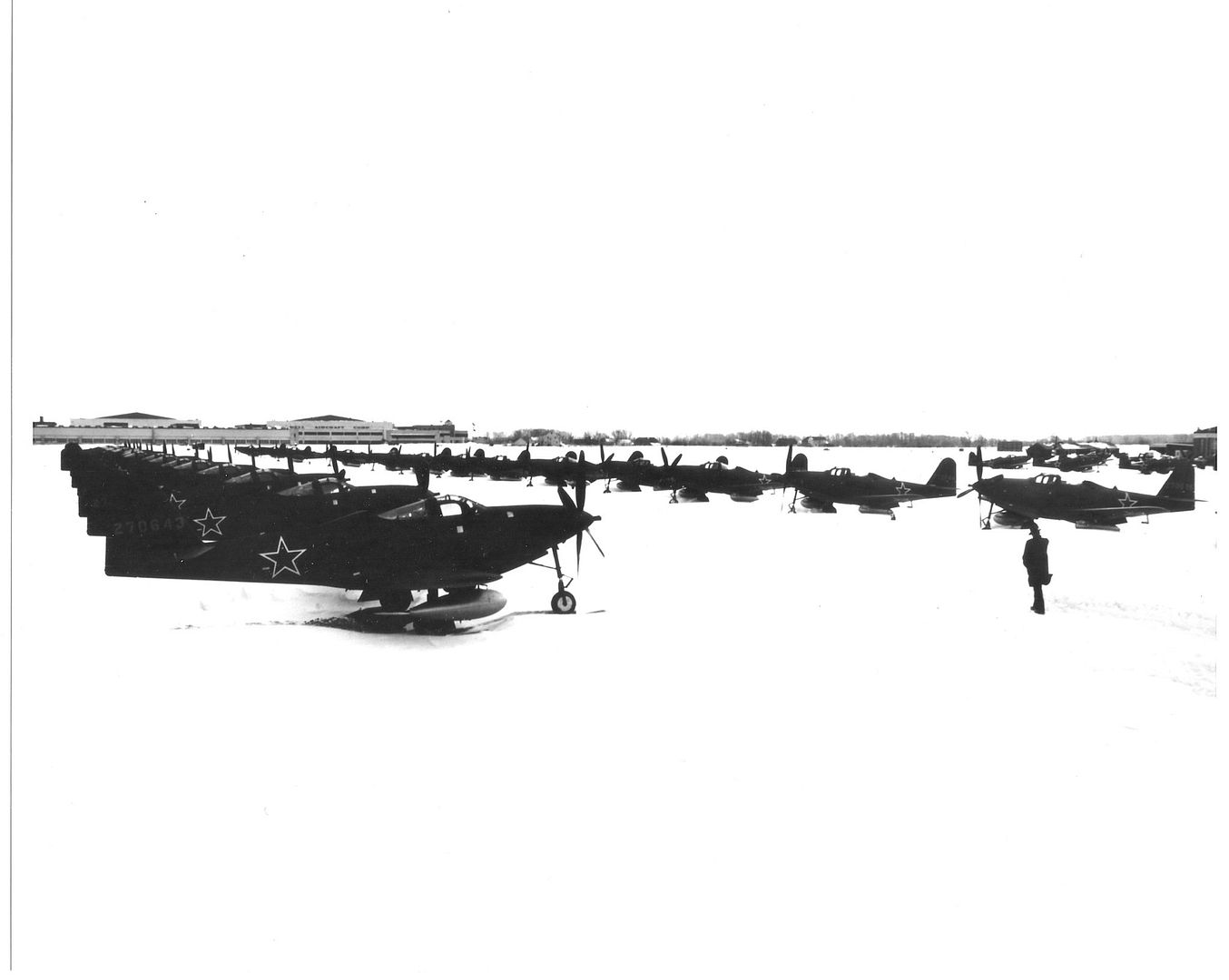
Andrea Hincerockur a Russian pilot Lt. Thompson Highfill of the 99th Bomb Group and Corzen Venzopkin another Russia flier pose behind a Soviet P-39, taken on a "shuttle mission".
Russian Colonel Alexander Ivanovich Pokryshkin, credited with destroying 59 German Aircraft and 3 time hero of the Soviet Union.
A Russian crew pose in front of there A-20.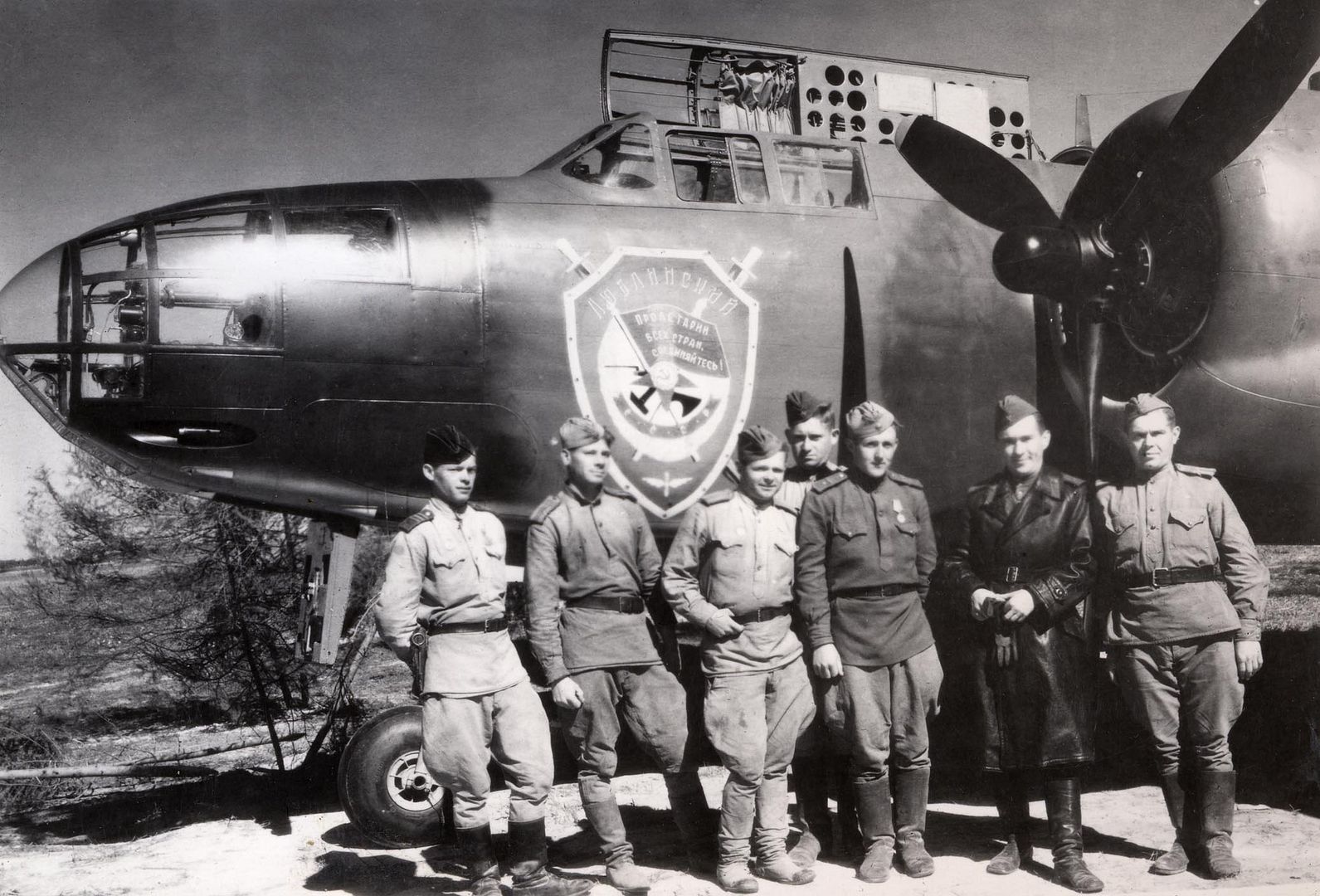
-
 Admin
Admin -
 Main Admin
Main Admin -
9 years agoThu Mar 31 2016, 12:29am
 Main AdminWednesdays photo.
Main AdminWednesdays photo.
The high aspect ratio lower wing which made the Nieuport 17 a sesquiplane (literally "one-and-a-half wings"), and which helped give it an impressive climb rate, was unable to sustain very high speeds without encountering flutter, which was encountered occasionally during sustained power on dives and some aircraft lost their lower wings as a result. It was misunderstood at the time, and also caused of the loss of several monoplanes ? a problem that existed back to the pioneer-era pre-war Bleriot XI and other monoplane designs from before the war ? which led to the RFC monoplane ban. British Nieuports were strengthened with modifications at No 2 Aeroplane Supply Depot, while training, and replacing the lower wings with those from Nieuport 24s at French squadrons helped reduce the danger.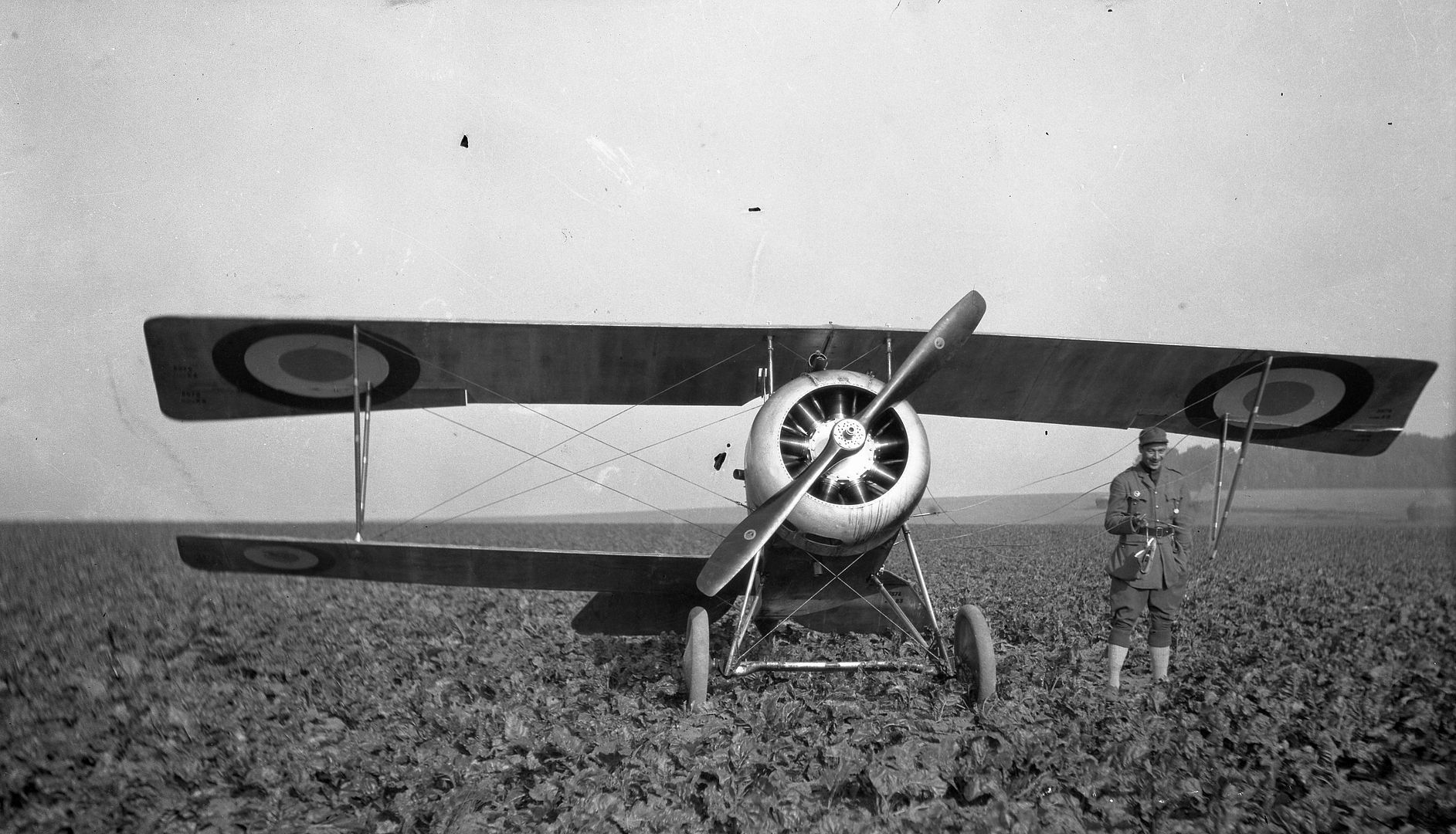
Lafayette Escadrille Courtney Campbells Nieuport XVII which he managed to land in a beet field after losing the left lower wing. No date or location
EDIT - from another forum
"Chicago native Courtney Campbell joined the Escadrille on April 15. He thought himself the comedian of the unit, but the truth was that he was a terrible danger to himself and others. The Escadrille should have booted him from the unit, but for some reason it did not.
History fails to record the exact date, but at some time while the Escadrille was in Chaudin, Courtney Campbell took off in his Nieuport 17 and threw it into a series of hard loops right over the airfield in plain view of his mates and everyone else who happened to be around. He came out of each loop aiming his plane at the hangars. He probably thought that it was rather funny to do so. With each loop, he climbed and pushed the Nieuport harder and harder. Finally, on the fourth loop the strained Nieuport lost its lower left wing at the point where it had met the fuselage. An ambulance was prepared for the inevitable fatal crash, but Courtney was leading a charmed life. He avoided attempting to land at the aerodrome, as most other pilots instinctively would have done. It was a smart move since the turns required to circle down to the field would have meant losing speed at every turn. Instead, he glided straight ahead which resulted in a safe landing in a turnip field ten kilometers from the aerodrome. To land safely having lost so much of one?s wing was a unique, albeit dubious accomplishment.
On June 15, Campbell decided to play games with Ted Parsons by riding his own plane practically right on top of Parson?s tail while the two were flying around. Parsons was unable to shake him, but the two made it back safely. In various other incidents, Campbell would later cause a collision between himself and another plane, destroying both, and then almost kill Arnoux de Maison-Rouge by punching his wheels into Arnoux?s top wing while the two were flying together. Campbell finally managed to extricate his plane from Arnoux?s wing and then landed safely though Arnoux was thoroughly shaken." -
9 years agoThu Apr 28 2016, 08:55pm
 Main AdminFive this week.
Main AdminFive this week.
Taken in France or Belgium.
P-47's of the 36th FG, armed with German drop tanks!!

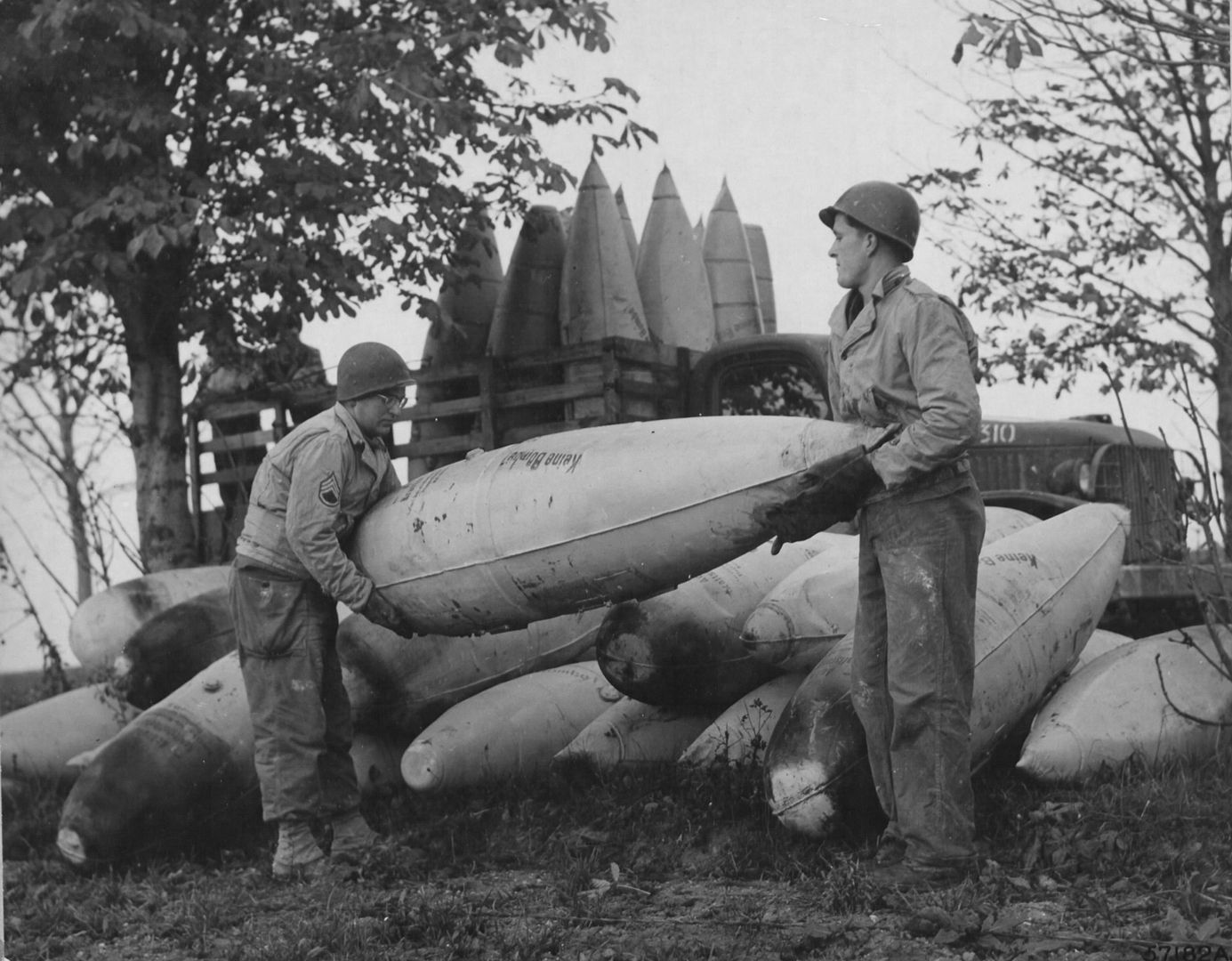
Arming the German drop tanks.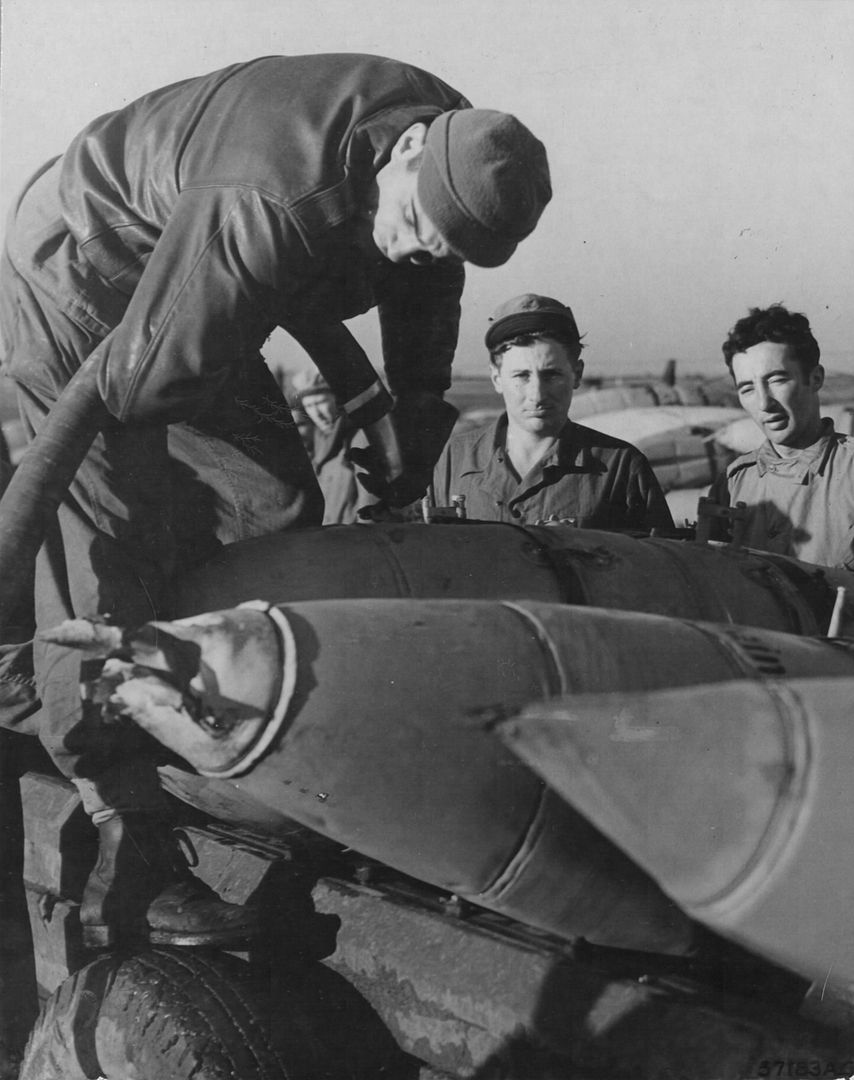
The nearest P-47 is also fitted with a "screamer" device, under the starboard wingtip.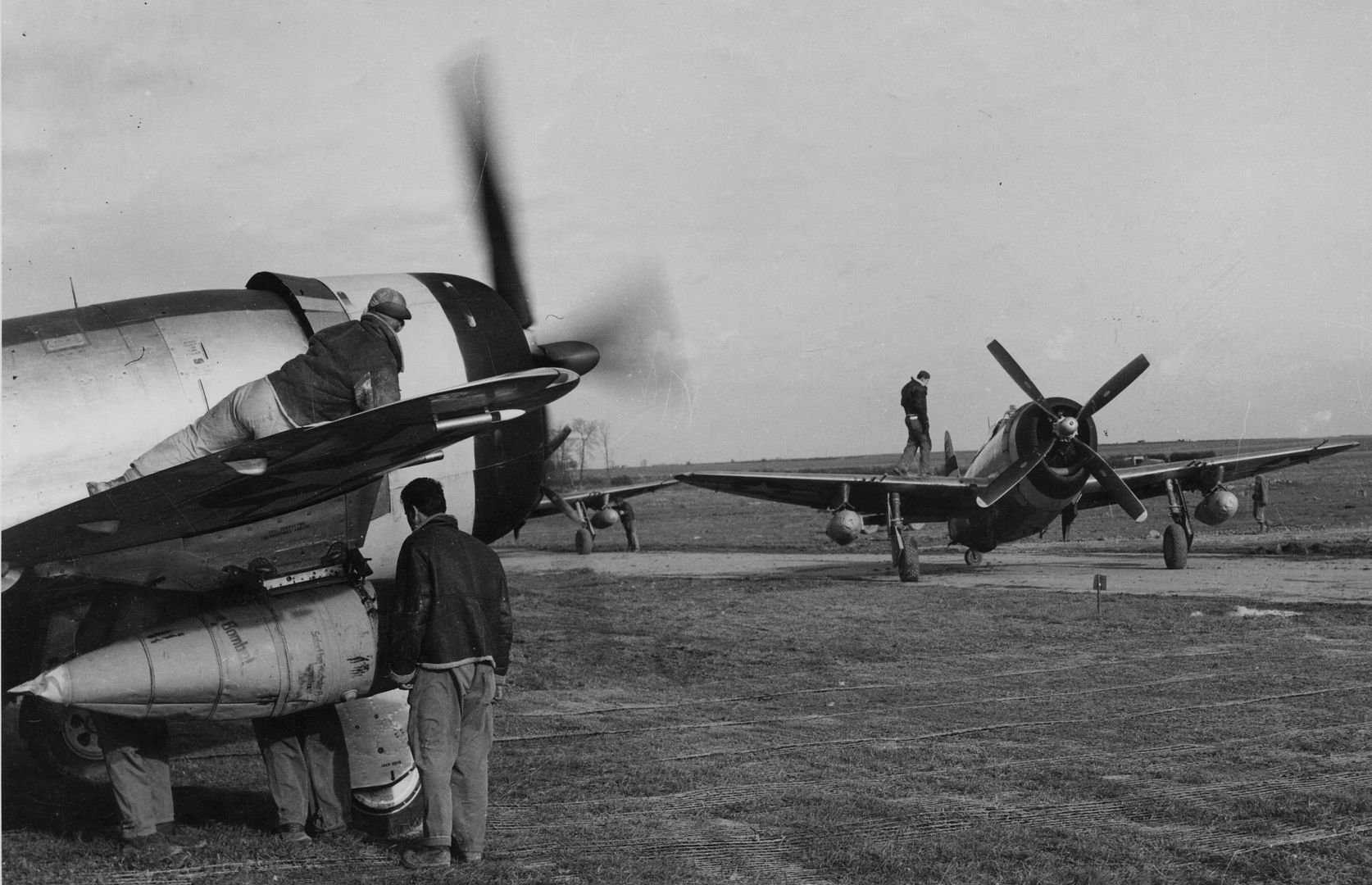
The targets.
Lt. Col. John R. Murphy, Minot, N.D. a 9th Air force Republic P-47 Thunderbolt fighter-bomber pilot, examines the "screamer whistle" he devised from a German incendiary shell. When his unit moved onto a former Luftwaffe field.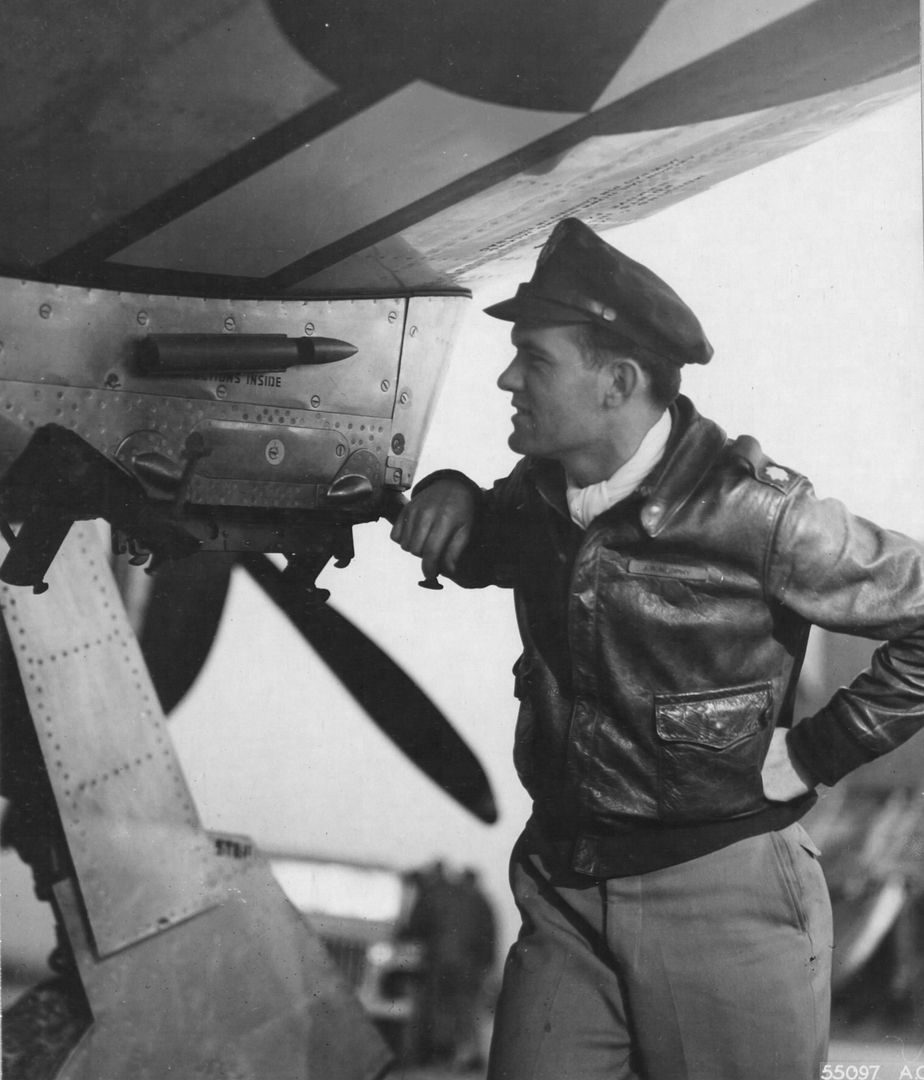
-
 Main Admin
Main Admin -
 Main AdminWednesdays photo's.
Main AdminWednesdays photo's.
And some totally amazing shots taken at Honington of 364th FG P-51's.
The group consisted of the following squadrons:
383d Fighter Squadron (N2)
384th Fighter Squadron (5Y)
385th Fighter Squadron (5E)
The 364th FG flew escort, dive-bombing, strafing, and patrol missions in France, Belgium, the Netherlands, and Germany. At first the group operated primarily as escort for B-17/Consolidated B-24 Liberator heavy bombers.
The group patrolled the English Channel during the Normandy invasion in June 1944, and, while continuing escort operations, supported ground forces in France after the invasion by strafing and bombing locomotives, marshalling yards, bridges, barges, and other targets.
Converted from Lockheed P-38 Lightnings to North American P-51 Mustangs in the summer of 1944 and from then until the end of the war flew many long-range escort missions heavy bombers that attacked oil refineries, industries, and other strategic objectives at Berlin, Regensburg, Merseburg, Stuttgart, Brussels, and elsewhere. The 364th received a Distinguished Unit Citation for an escort mission on 27 December 1944 when the group dispersed a large force of German fighters that attacked the bomber formation the group was escorting on a raid to Frankfurt.
The 364th also flew air-sea rescue missions, engaged in patrol activities, and continued to support ground forces as the battle line moved through France and into Germany. Took part in the effort to invade the Netherlands by air, September 1944; the Battle of the Bulge, December 1944-January 1945; and the assault across the Rhine, March 1945.
Although the last mission by the 364th took place on 25 April 1945, the group did not depart until November, returning to Camp Kilmer, New Jersey, for inactivation. Even then, Honington remained the lone Eighth Air Force outpost in the UK becoming Fighter Command HQ on 5 October.
Honington was the last USAAF station to be returned to the RAF. By the beginning of 1946, the airfield remained the only active station which had been used by the Eighth Air Force and a fitting ceremony was planned to mark its closure and official handing back to the Royal Air Force. On 26 February, Brigadier General Emil Kiel - the Eighth Fighter Command commander - was present to hand over the keys of the station to Air Marshal Sir James Robb, AOC RAF Fighter Command. An RAF band played The Star-Spangled Banner as the Stars and Stripes were lowered for the RAF Ensign to be hoisted in its place.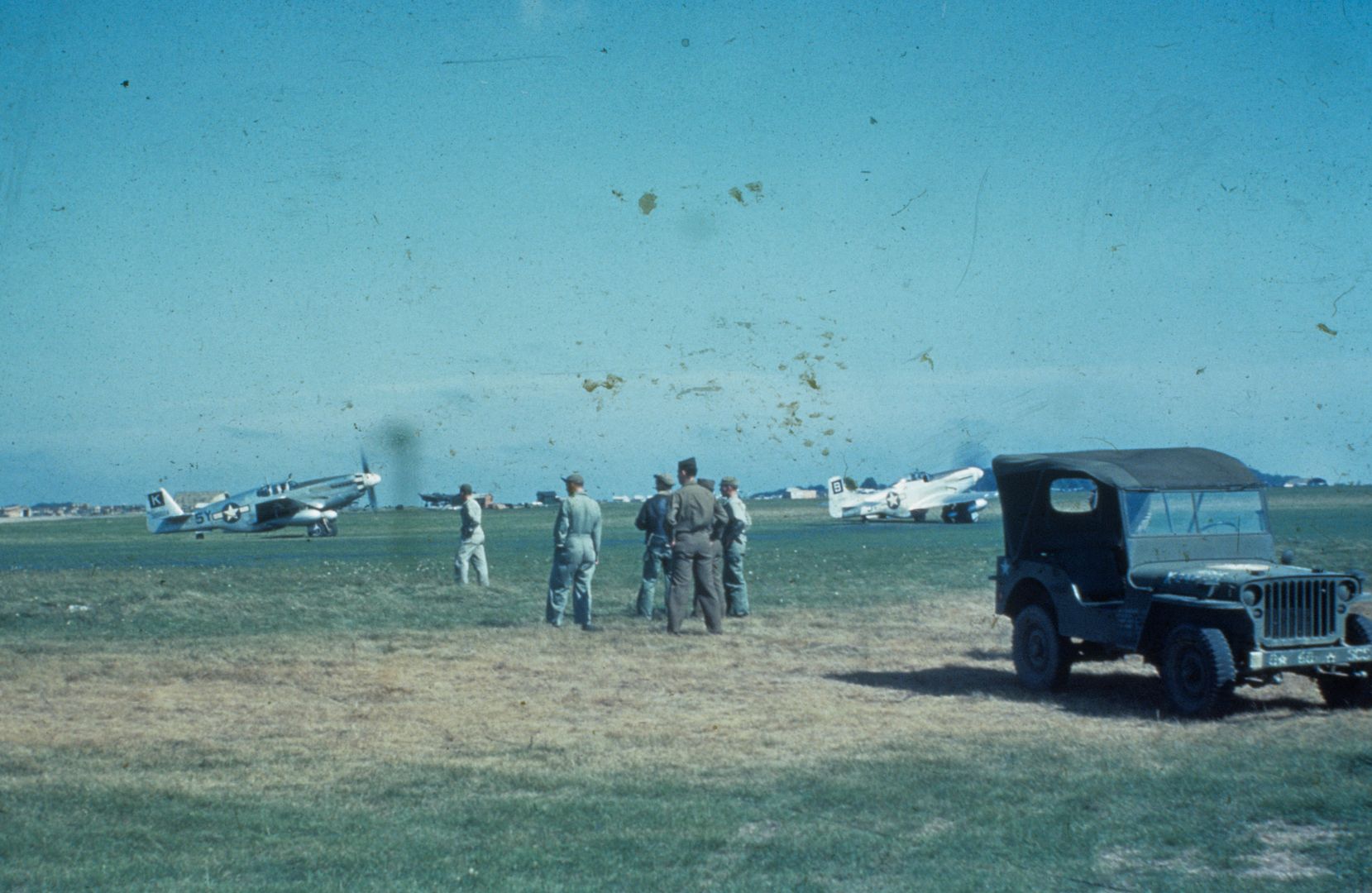
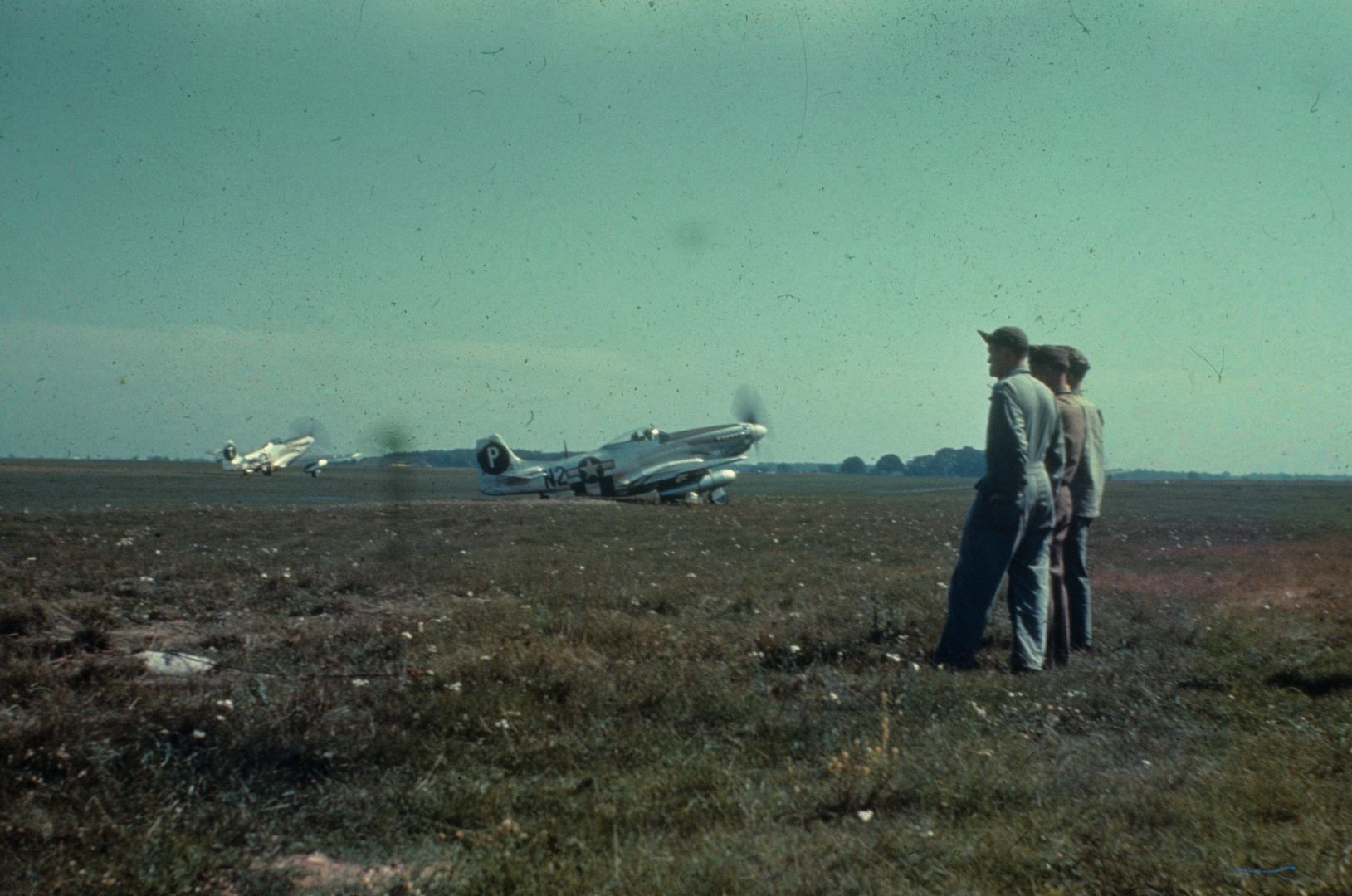

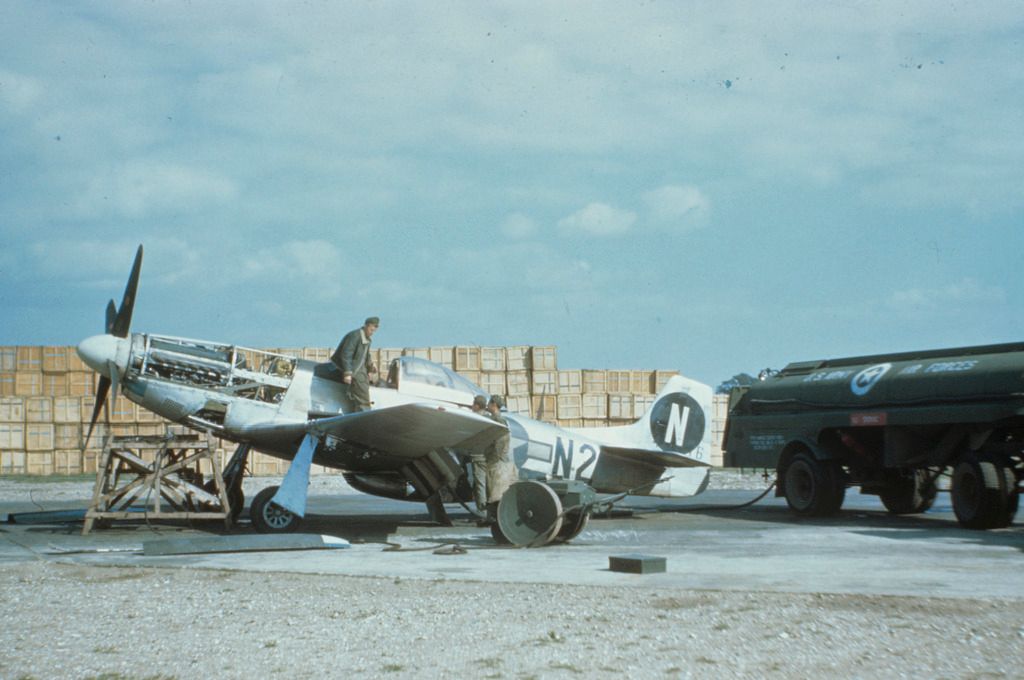
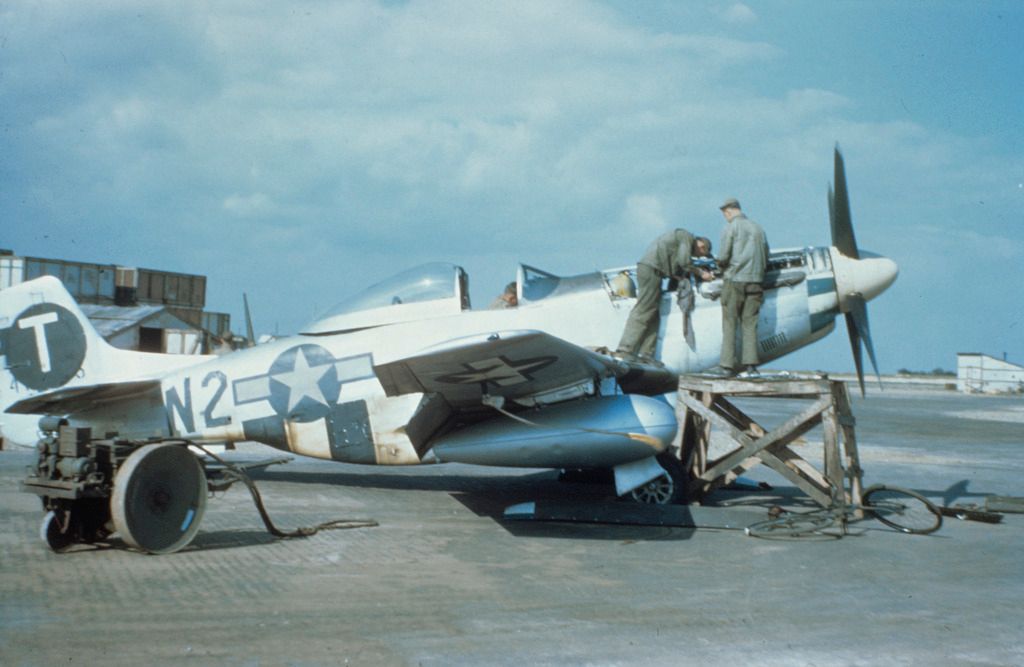
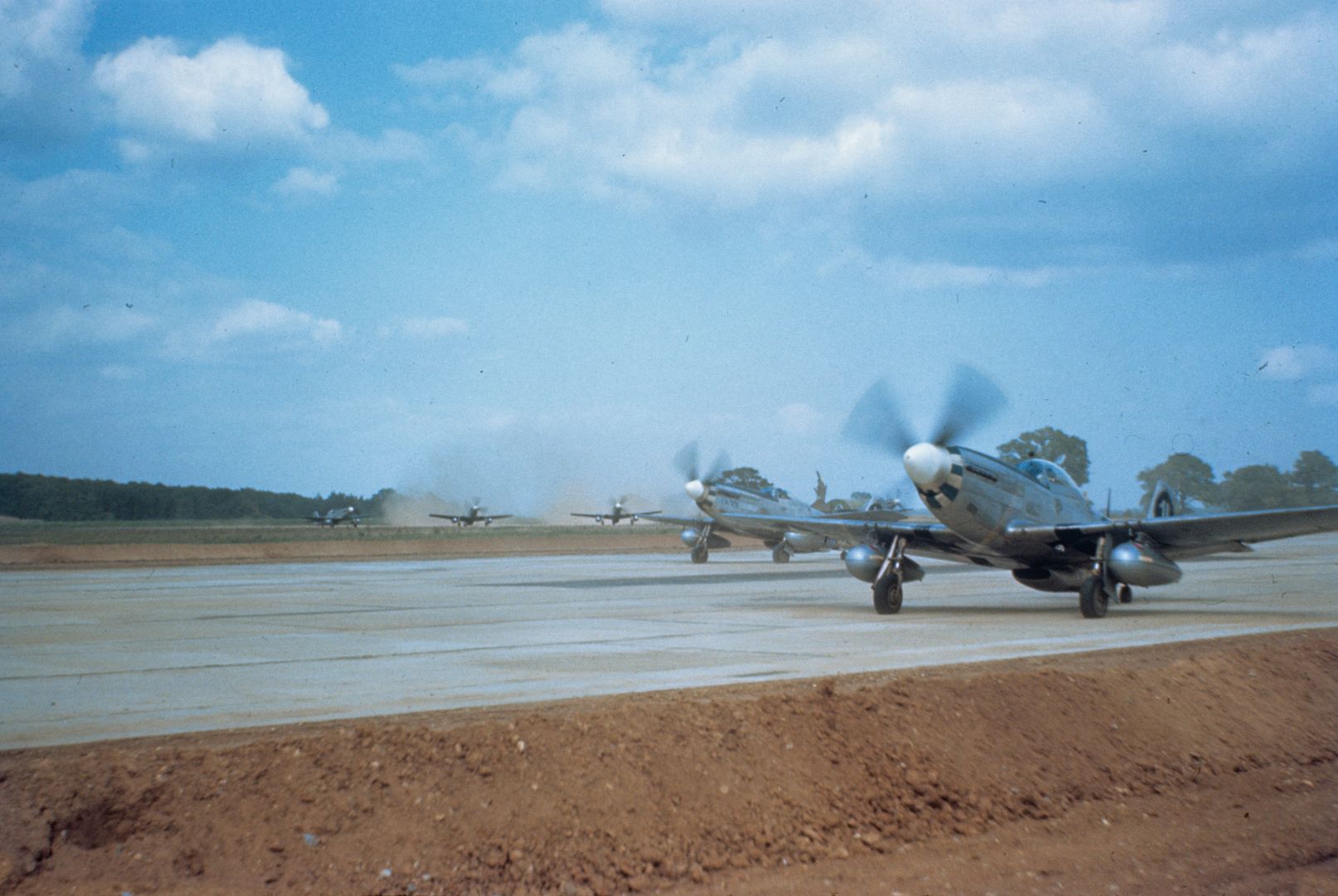
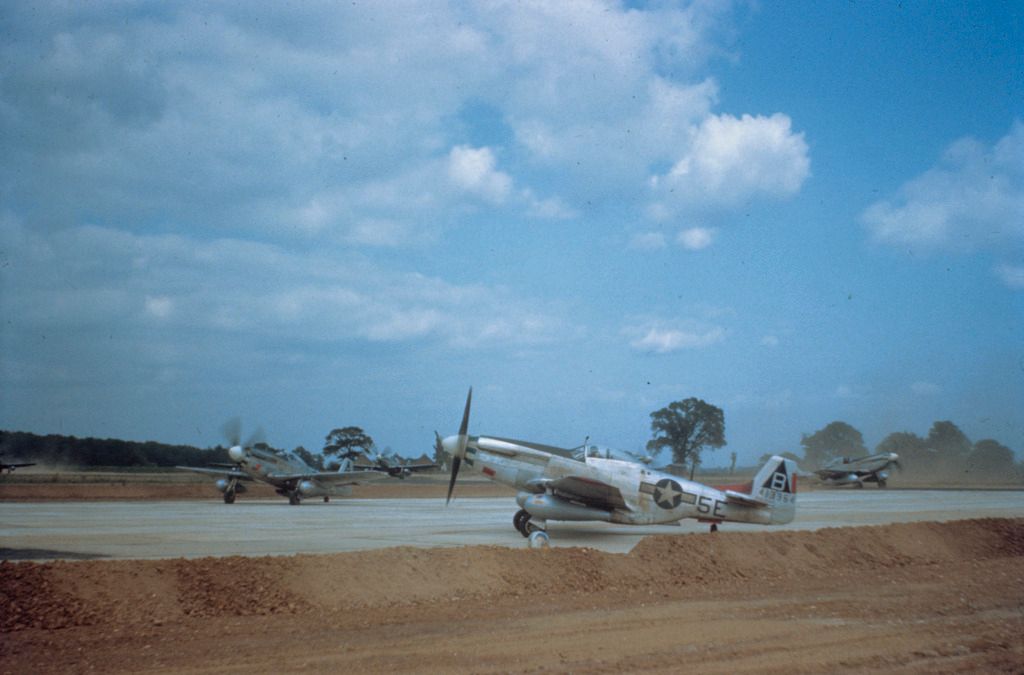
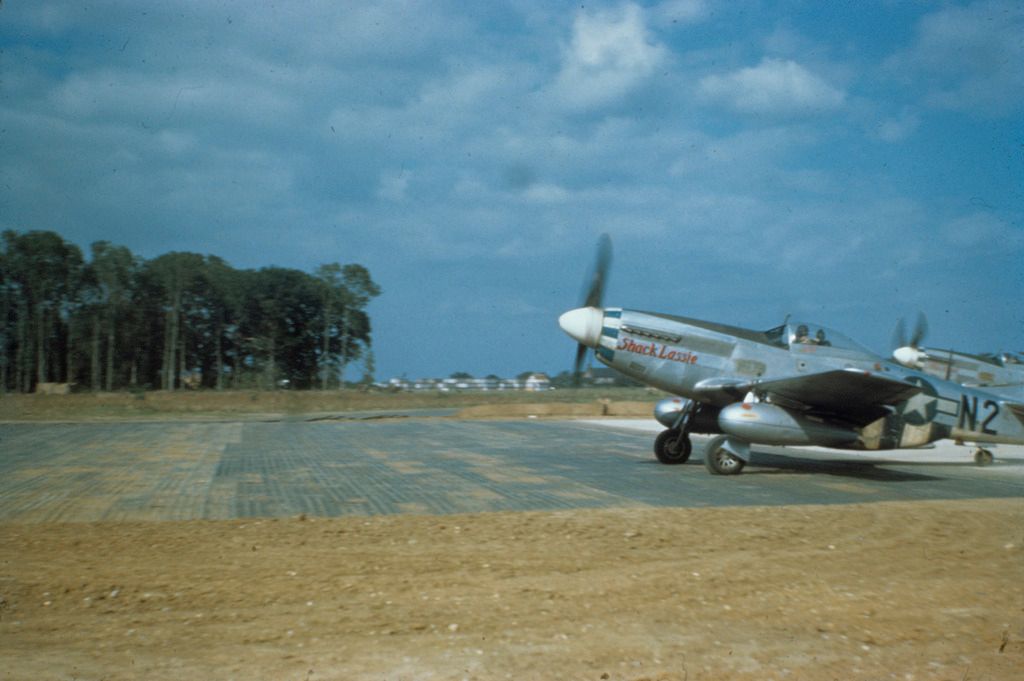
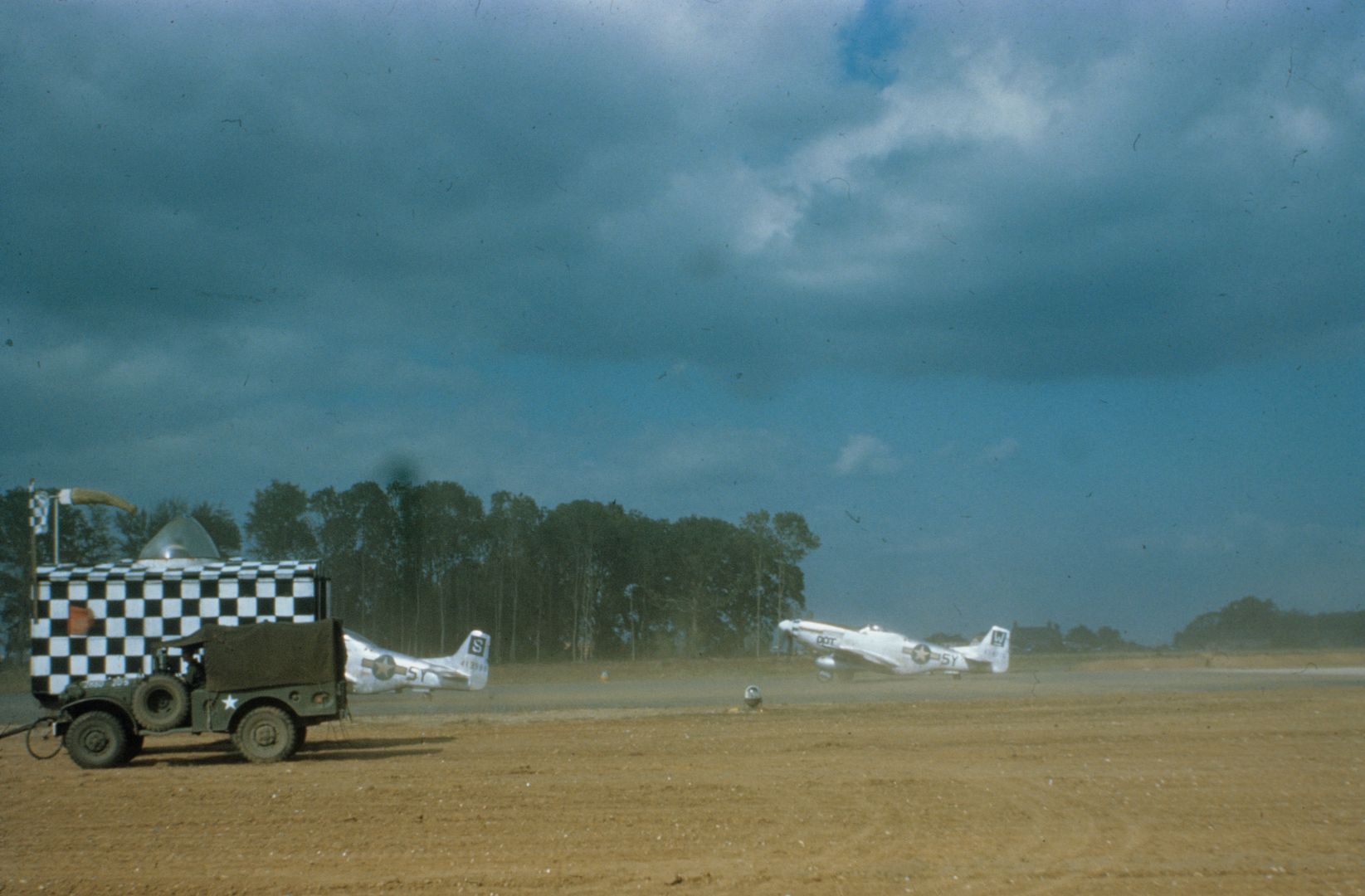
Post a reply
- Go to Previous topic
- Go to Next topic
- Go to Welcome
- Go to Introduce Yourself
- Go to General Discussion
- Go to Screenshots, Images and Videos
- Go to Off topic
- Go to Works in Progress
- Go to Skinning Tips / Tutorials
- Go to Skin Requests
- Go to IJAAF Library
- Go to Luftwaffe Library
- Go to RAF Library
- Go to USAAF / USN Library
- Go to Misc Library
- Go to The Ops Room
- Go to Made in Germany
- Go to Campaigns and Missions
- Go to Works in Progress
- Go to Juri's Air-Raid Shelter
- Go to Campaigns and Missions
- Go to Works in Progress
- Go to Skinpacks
- Go to External Projects Discussion
- Go to Books & Resources
